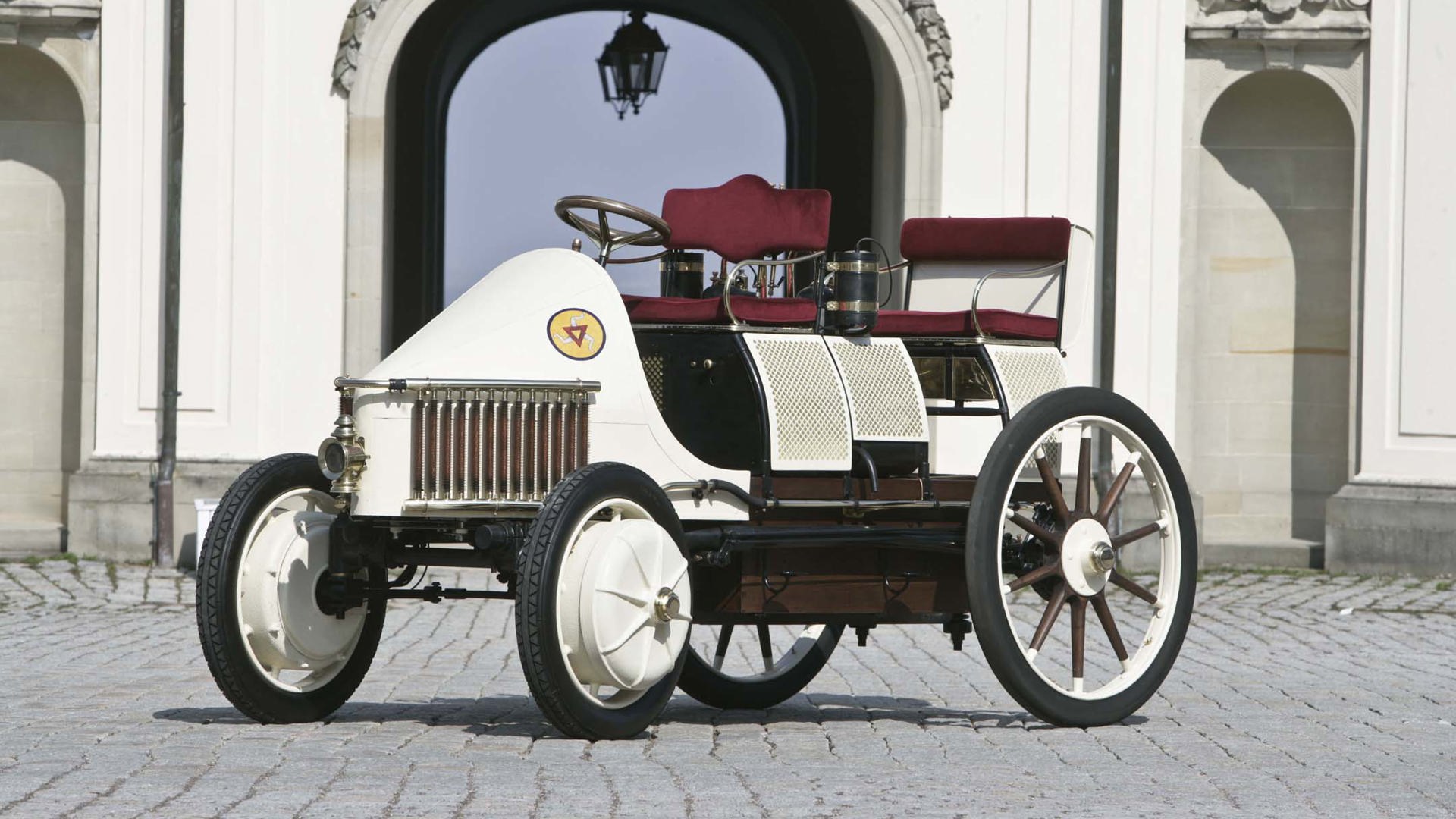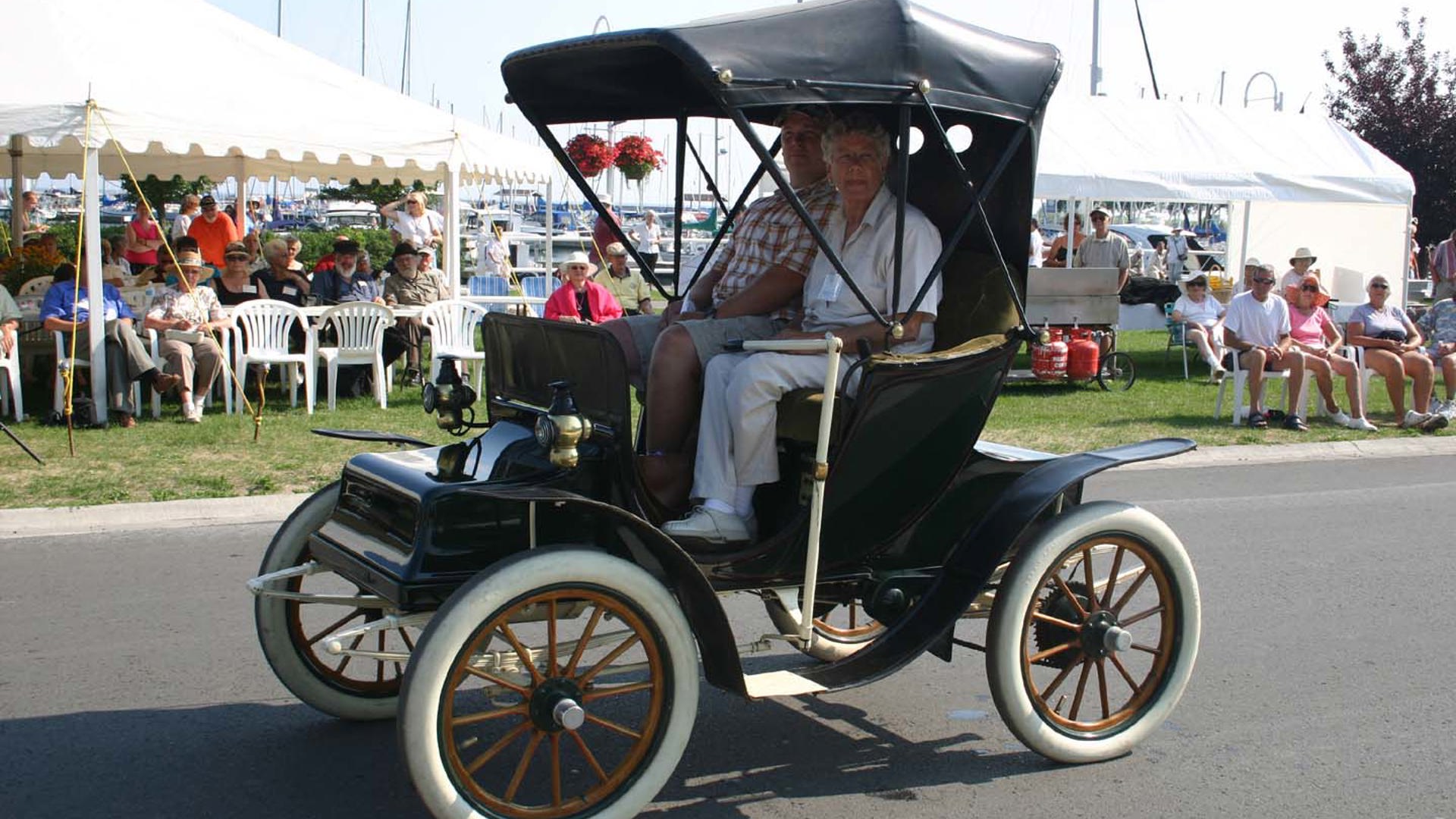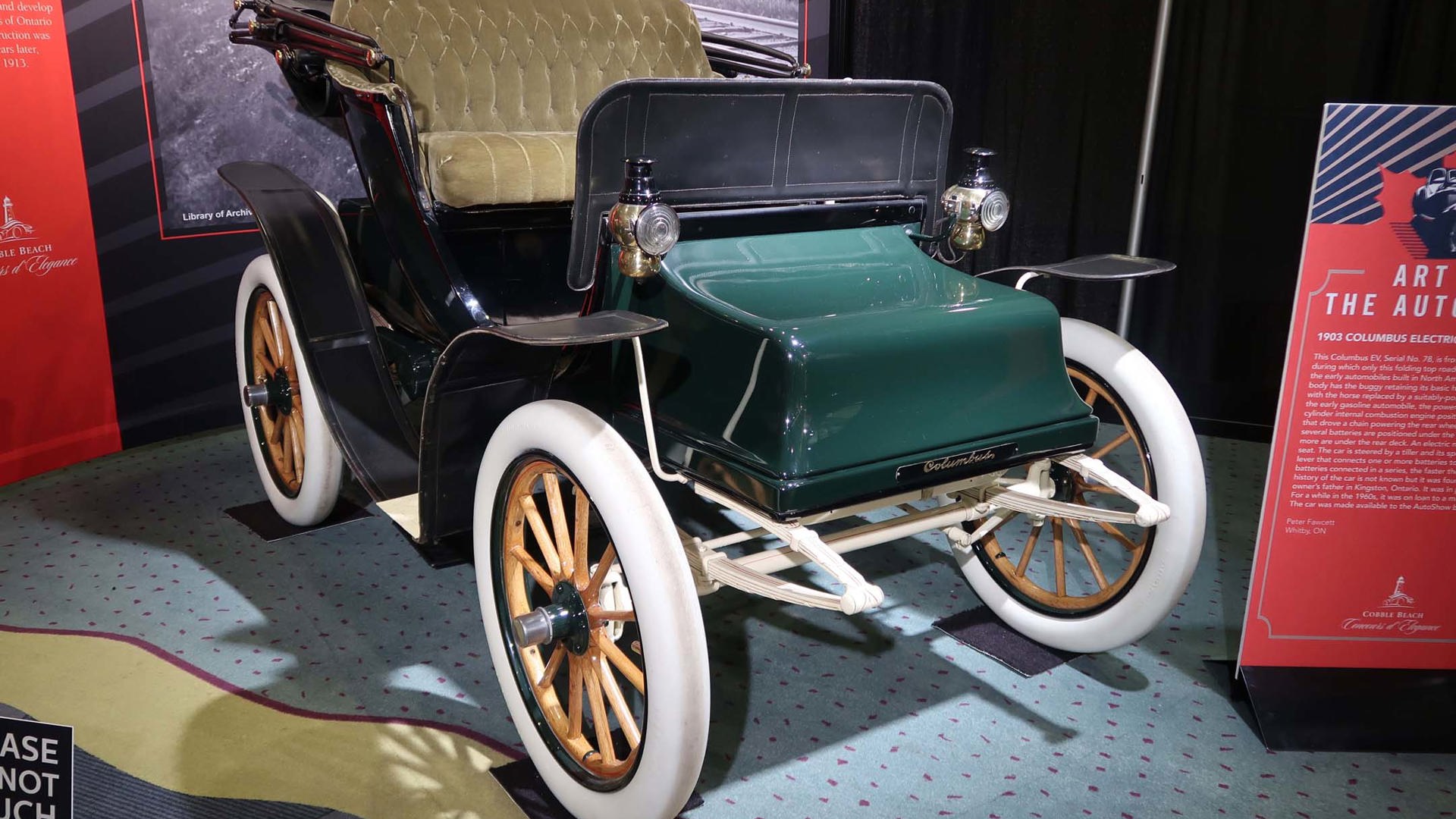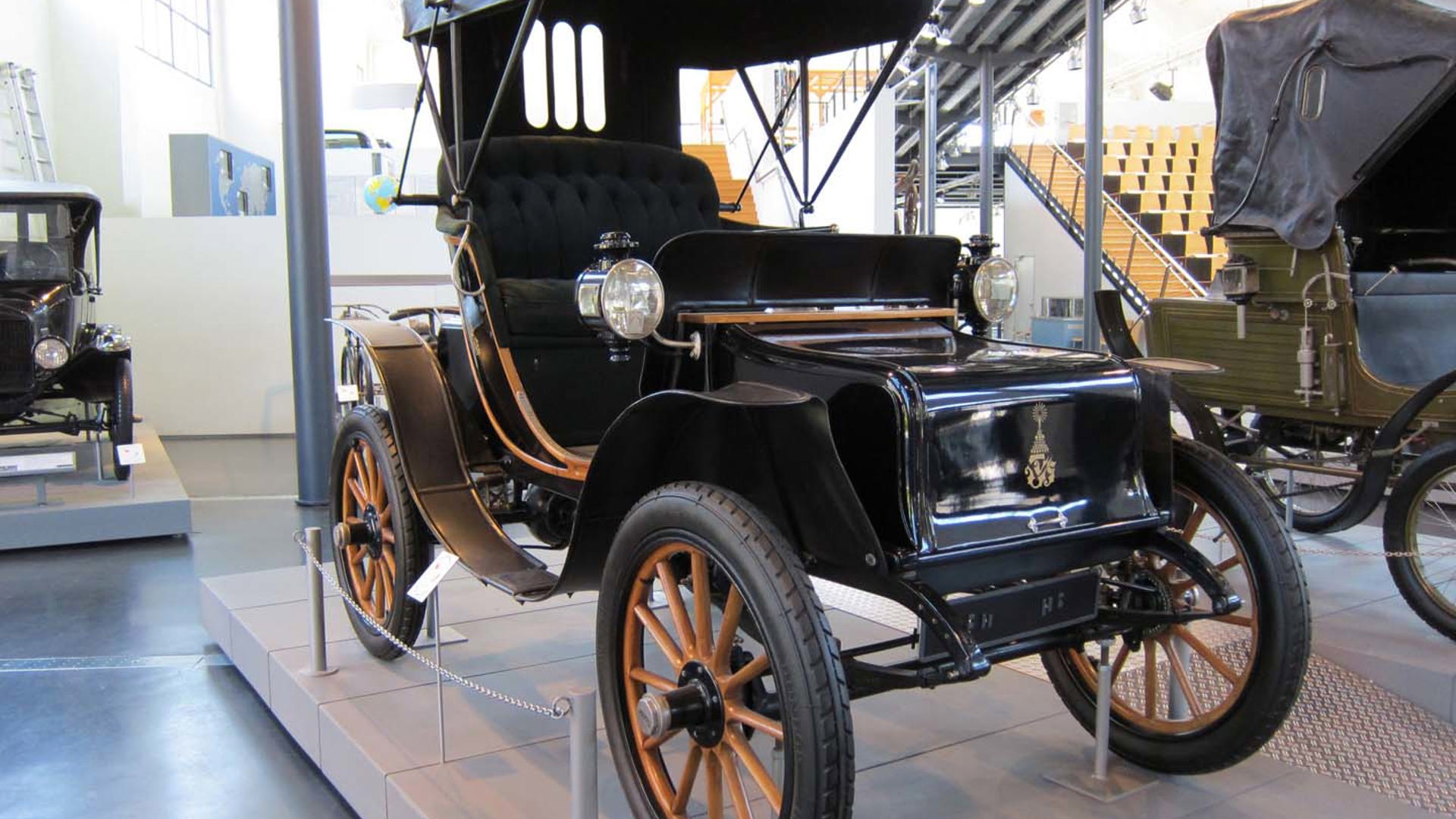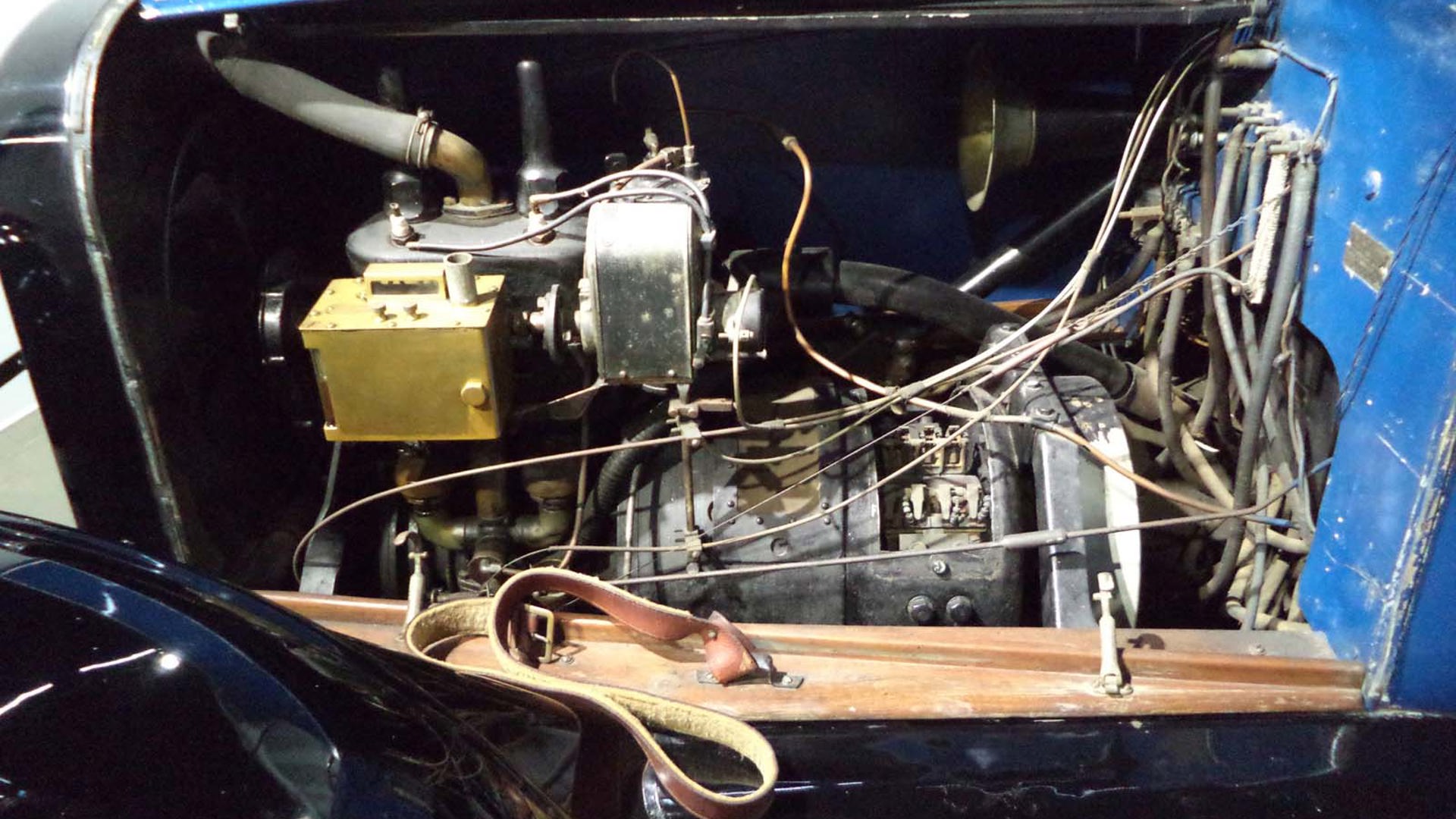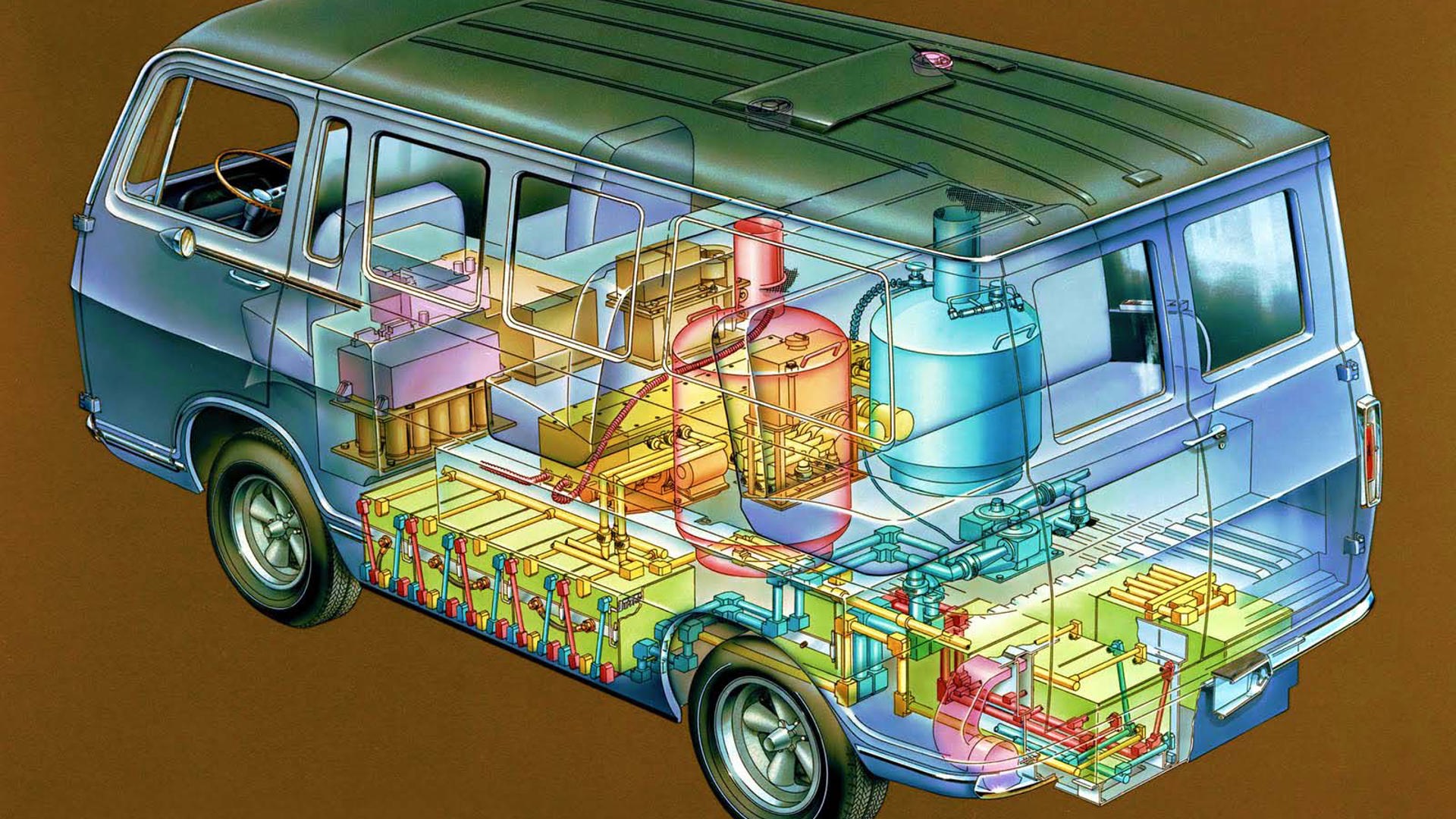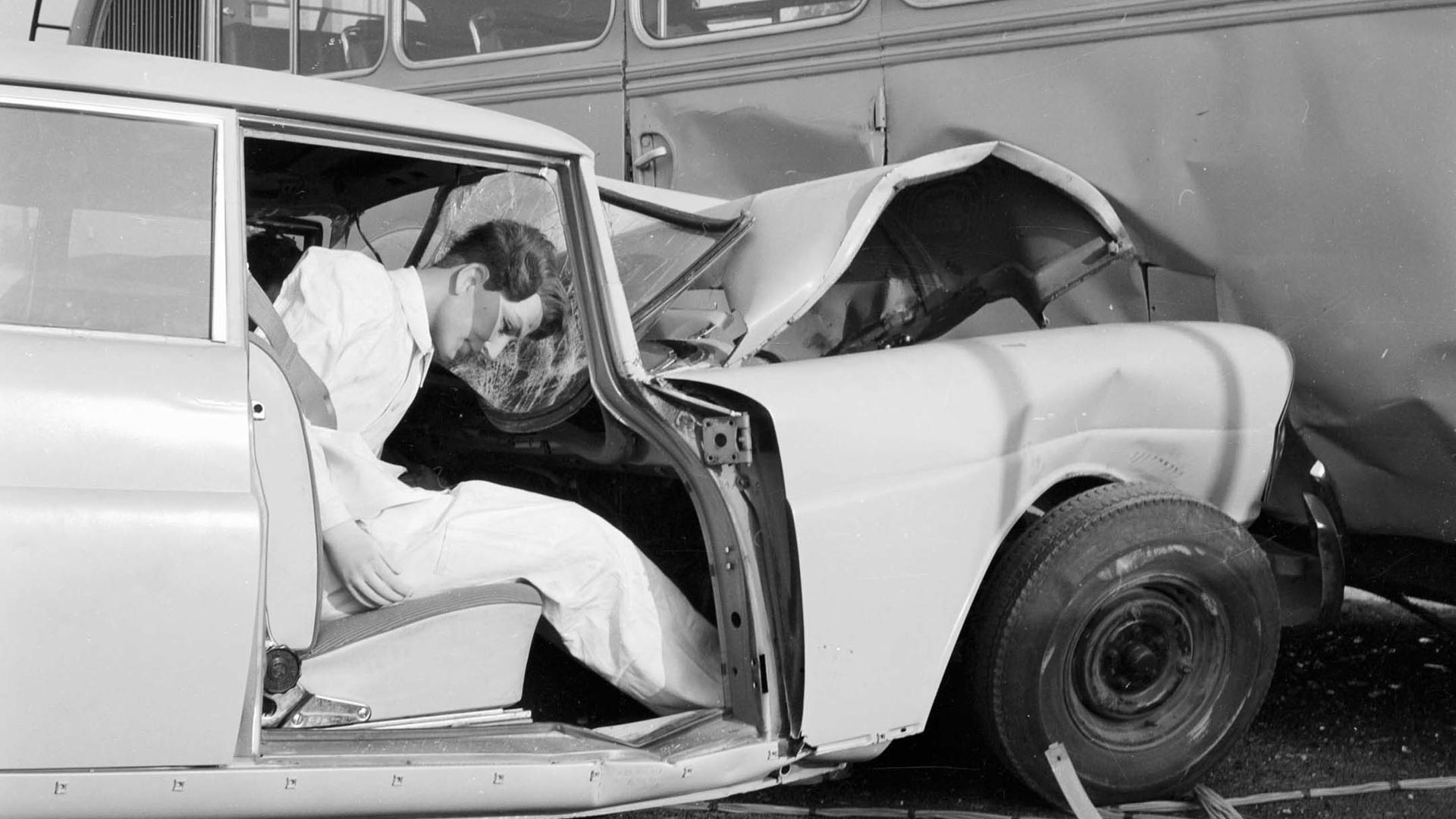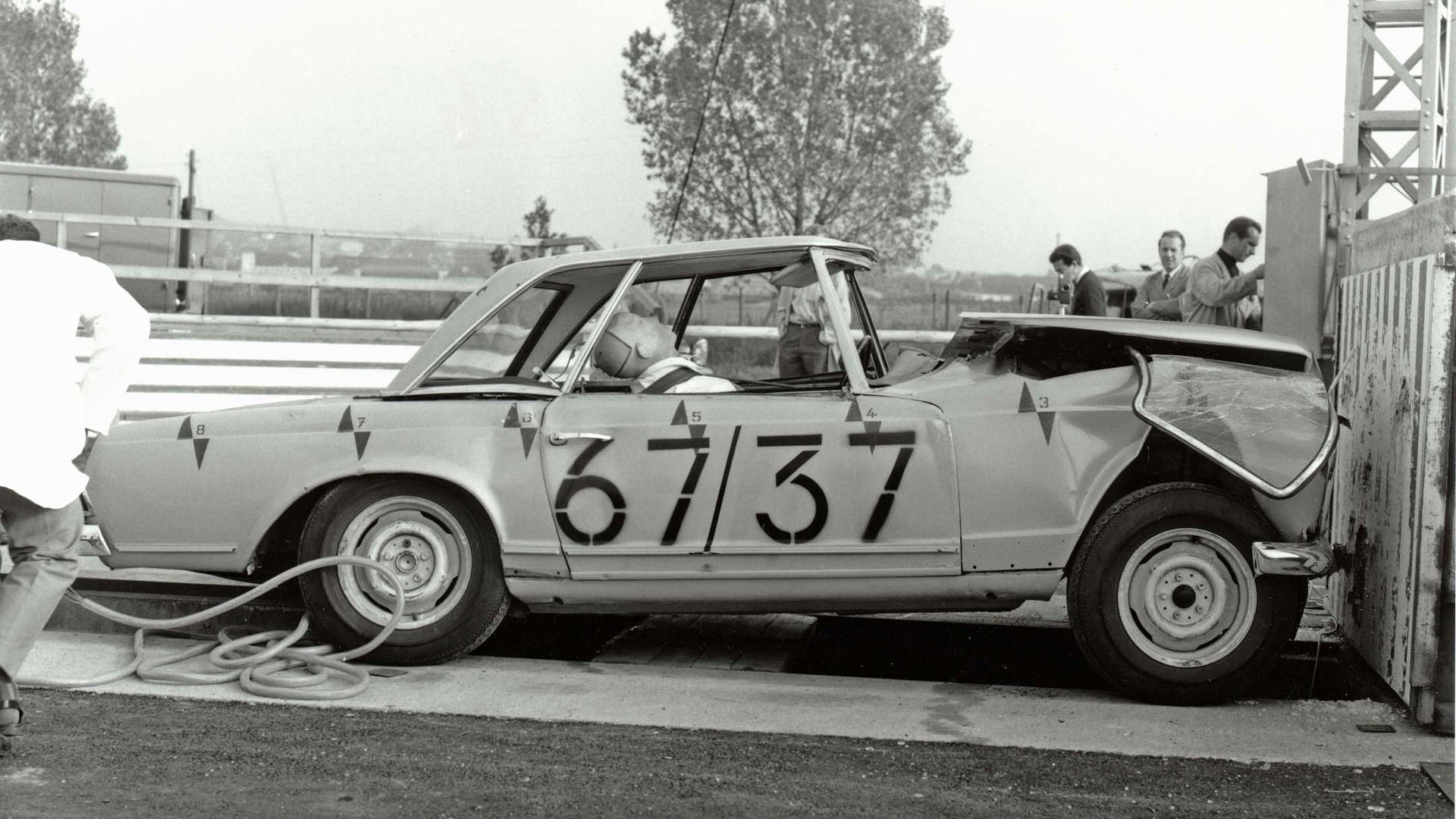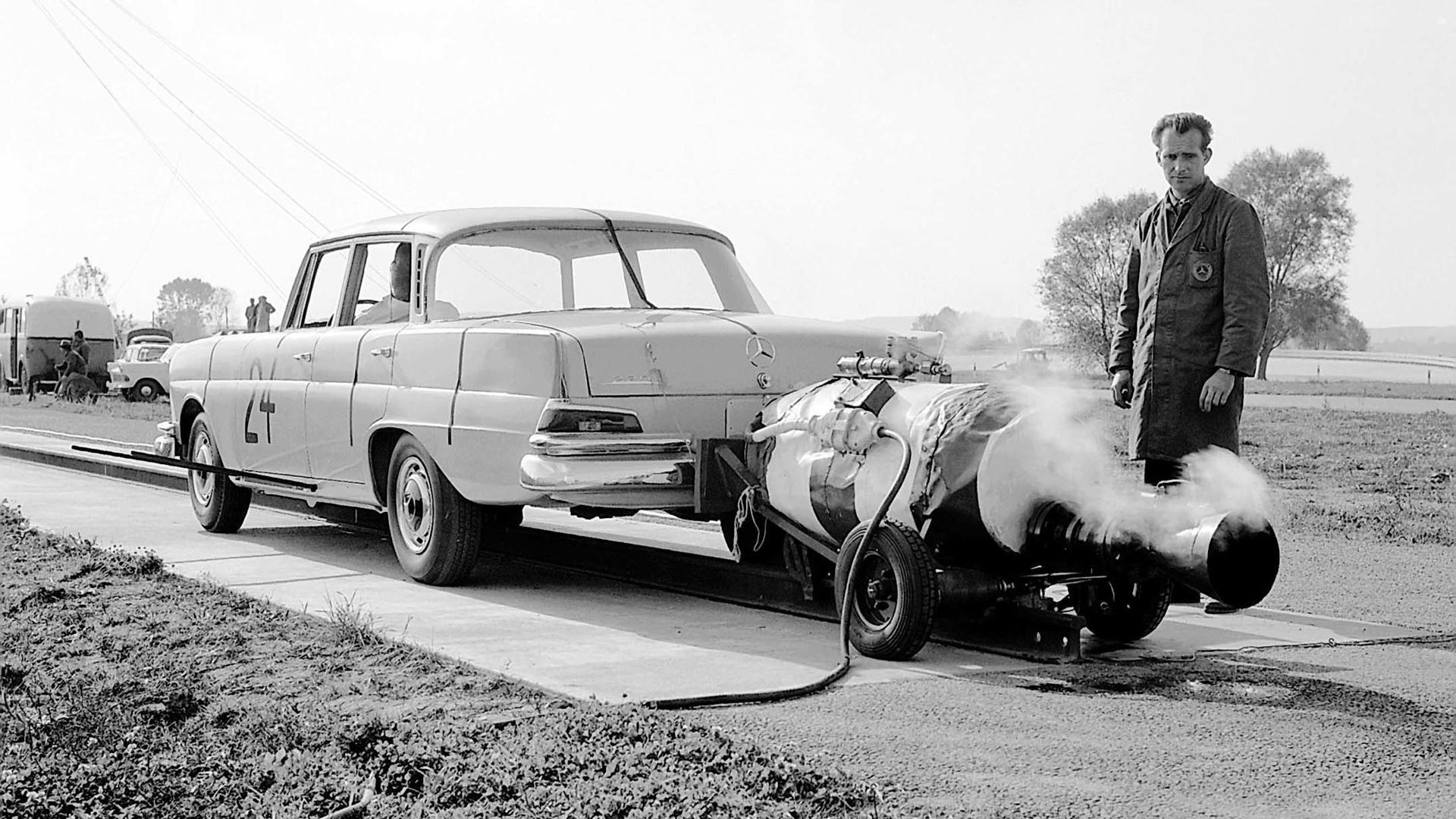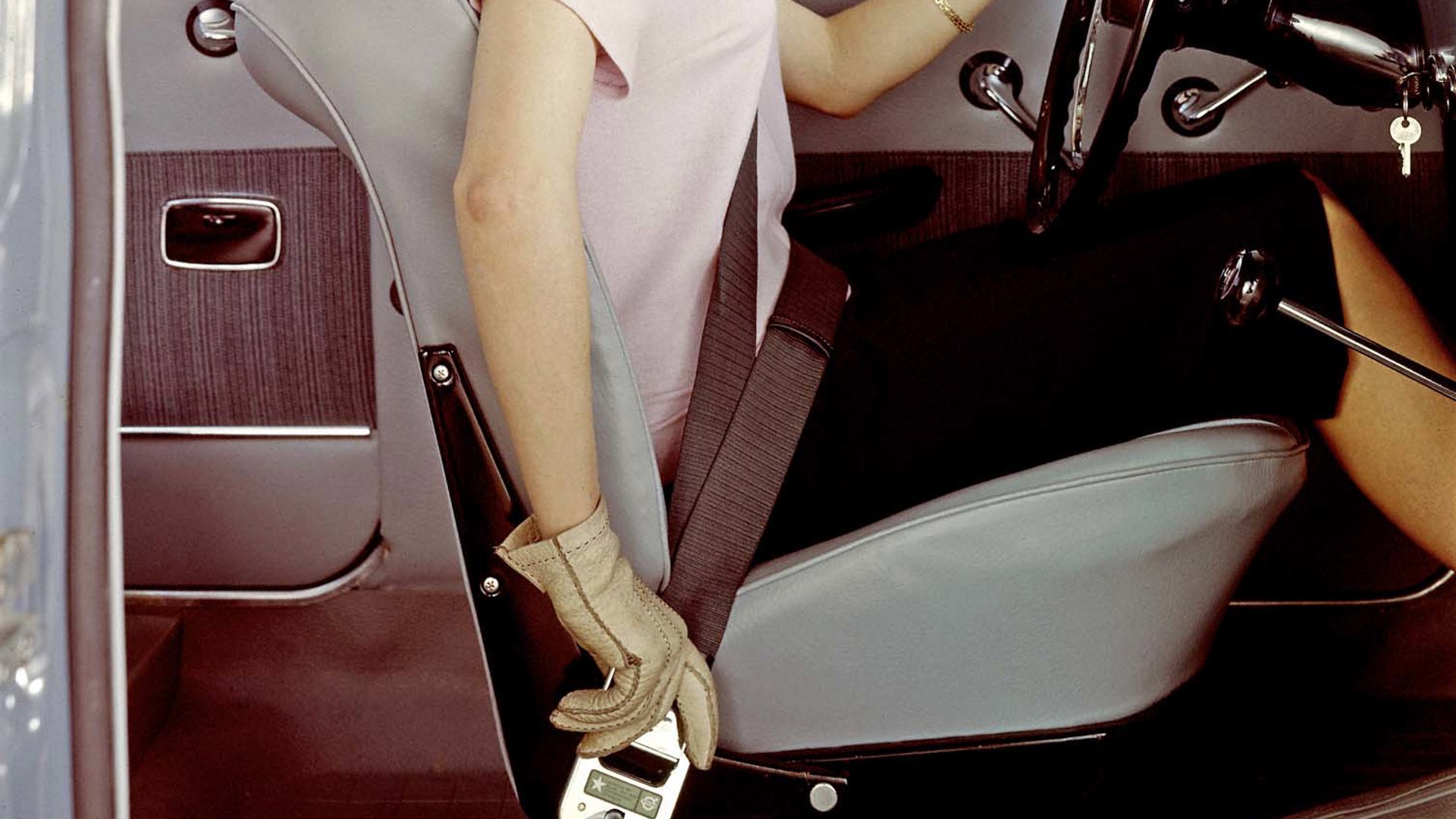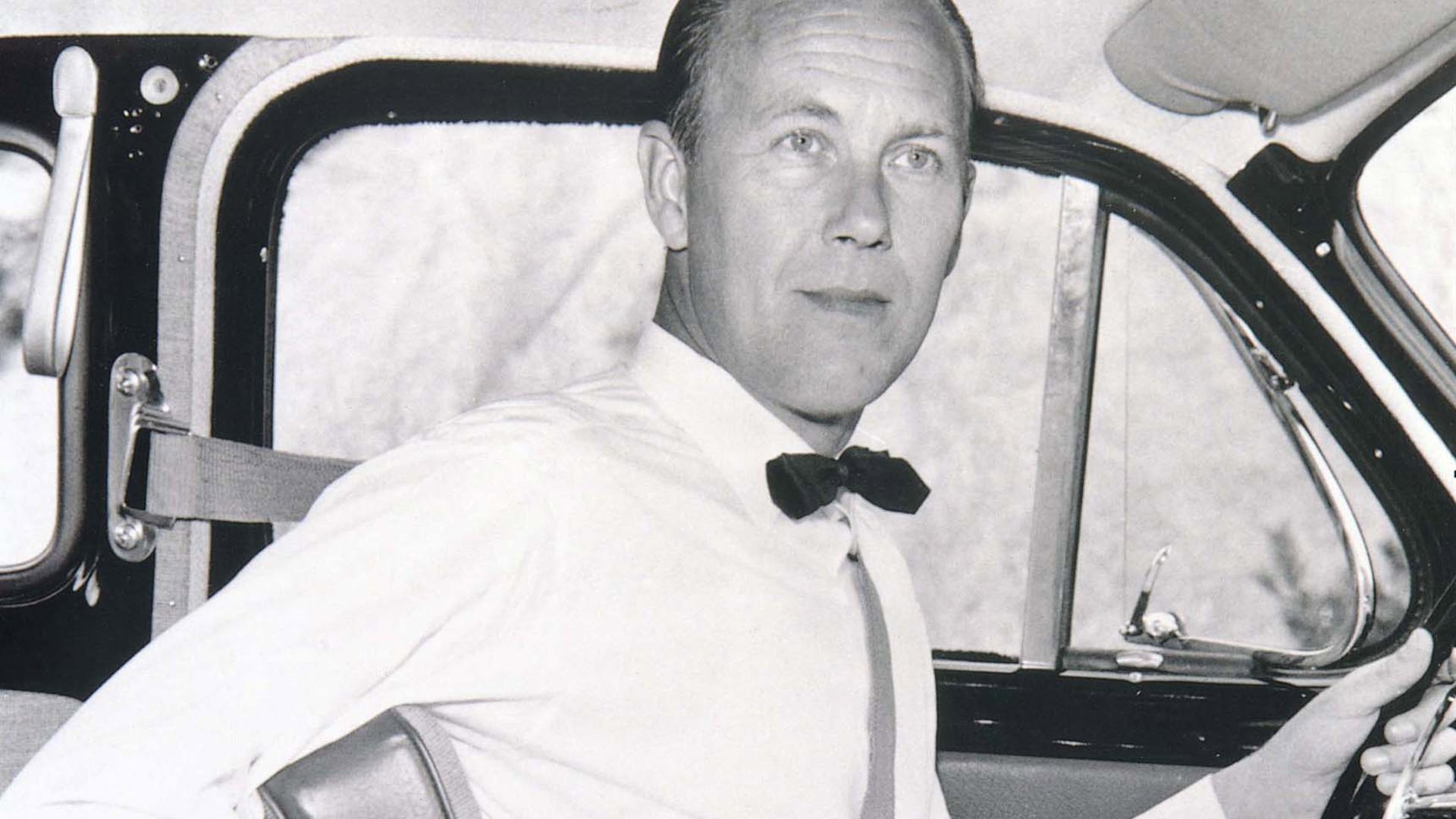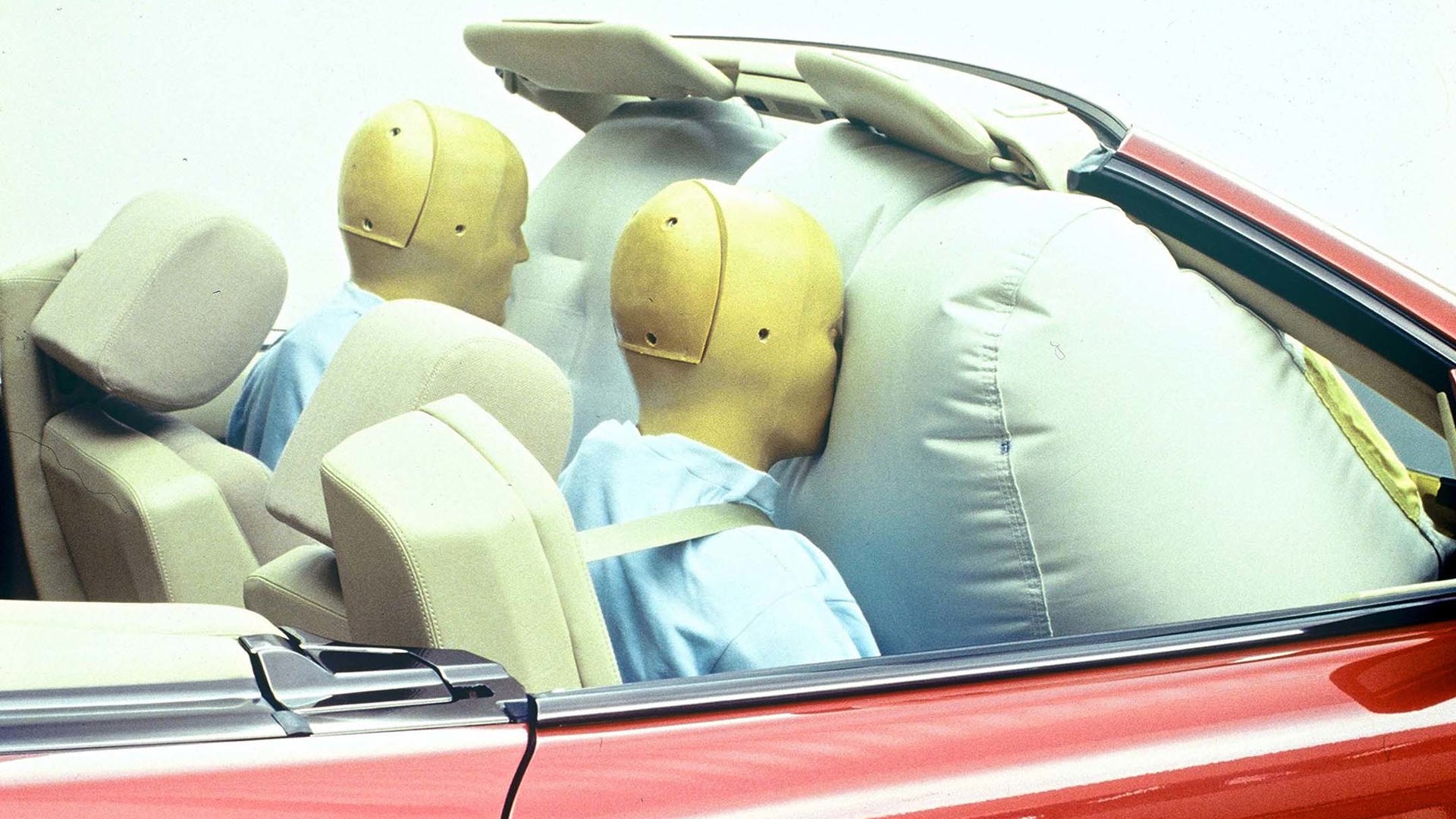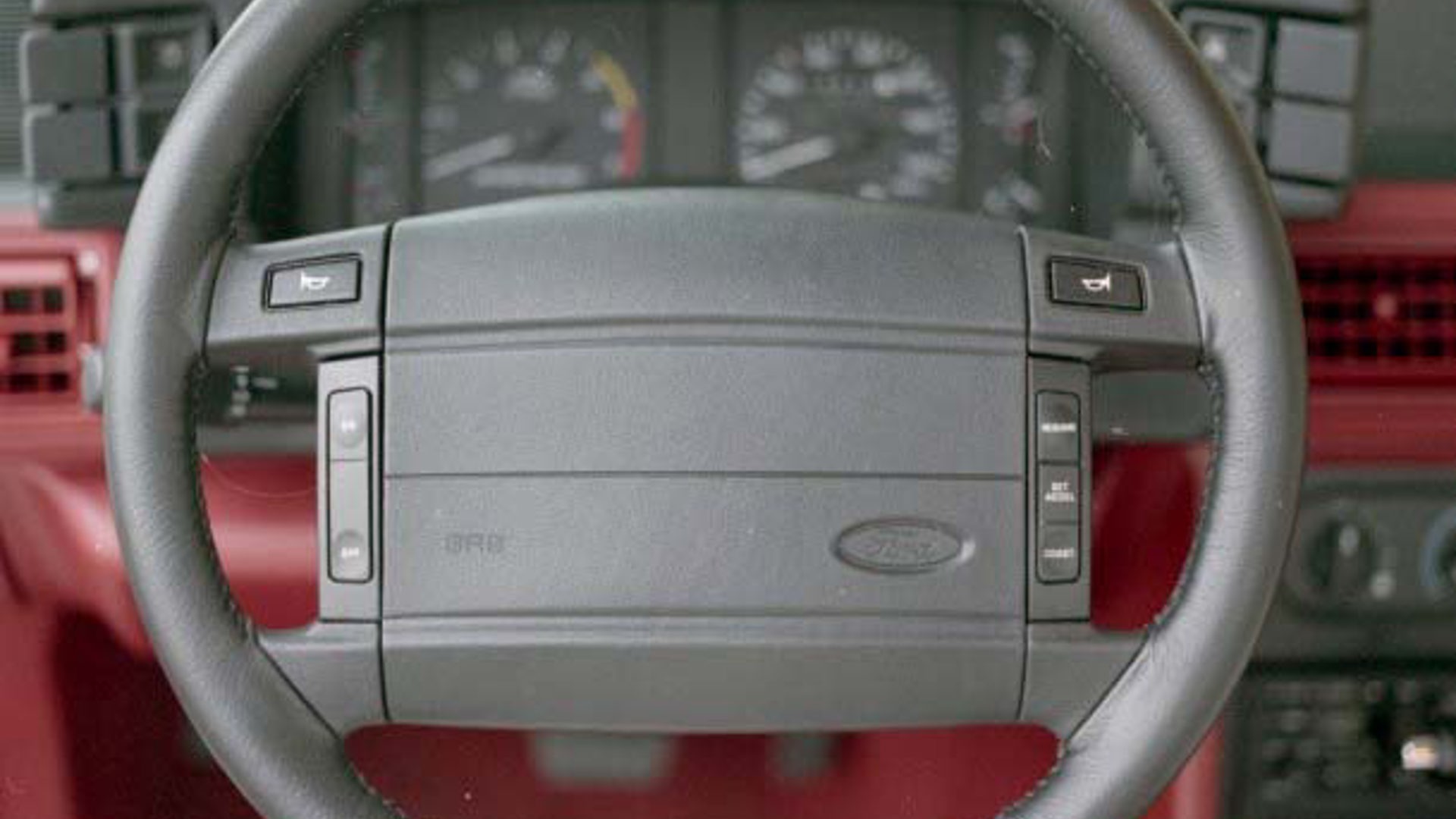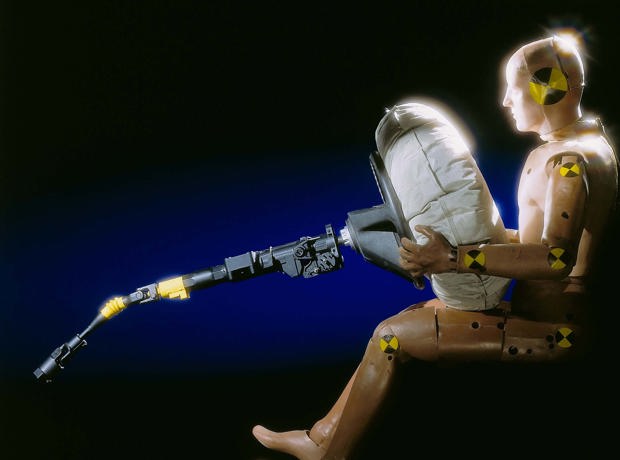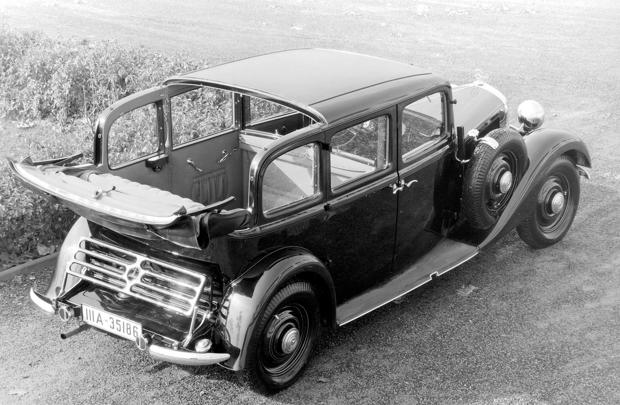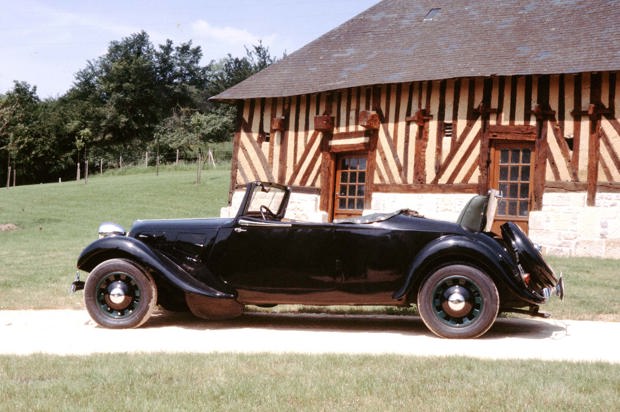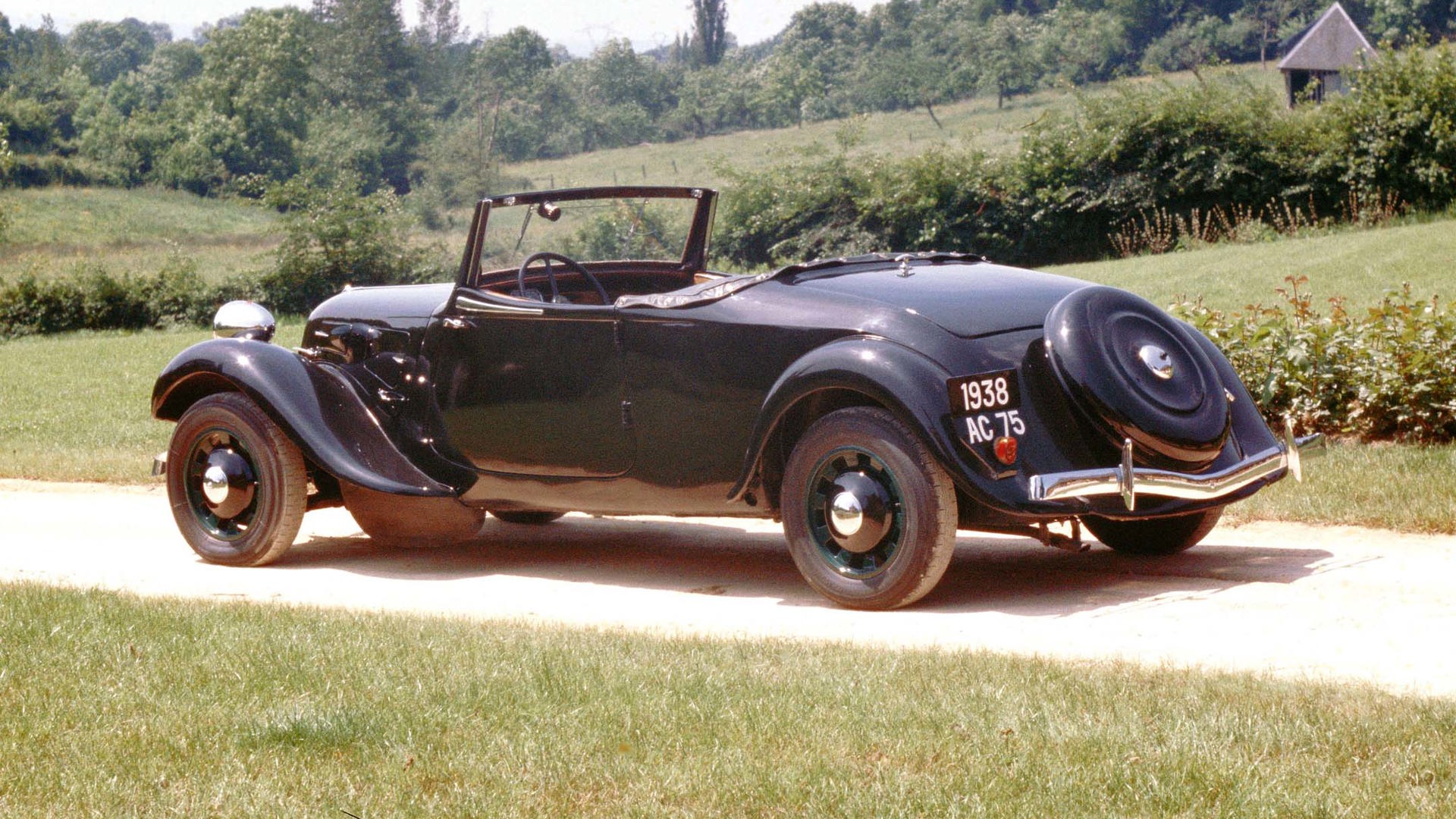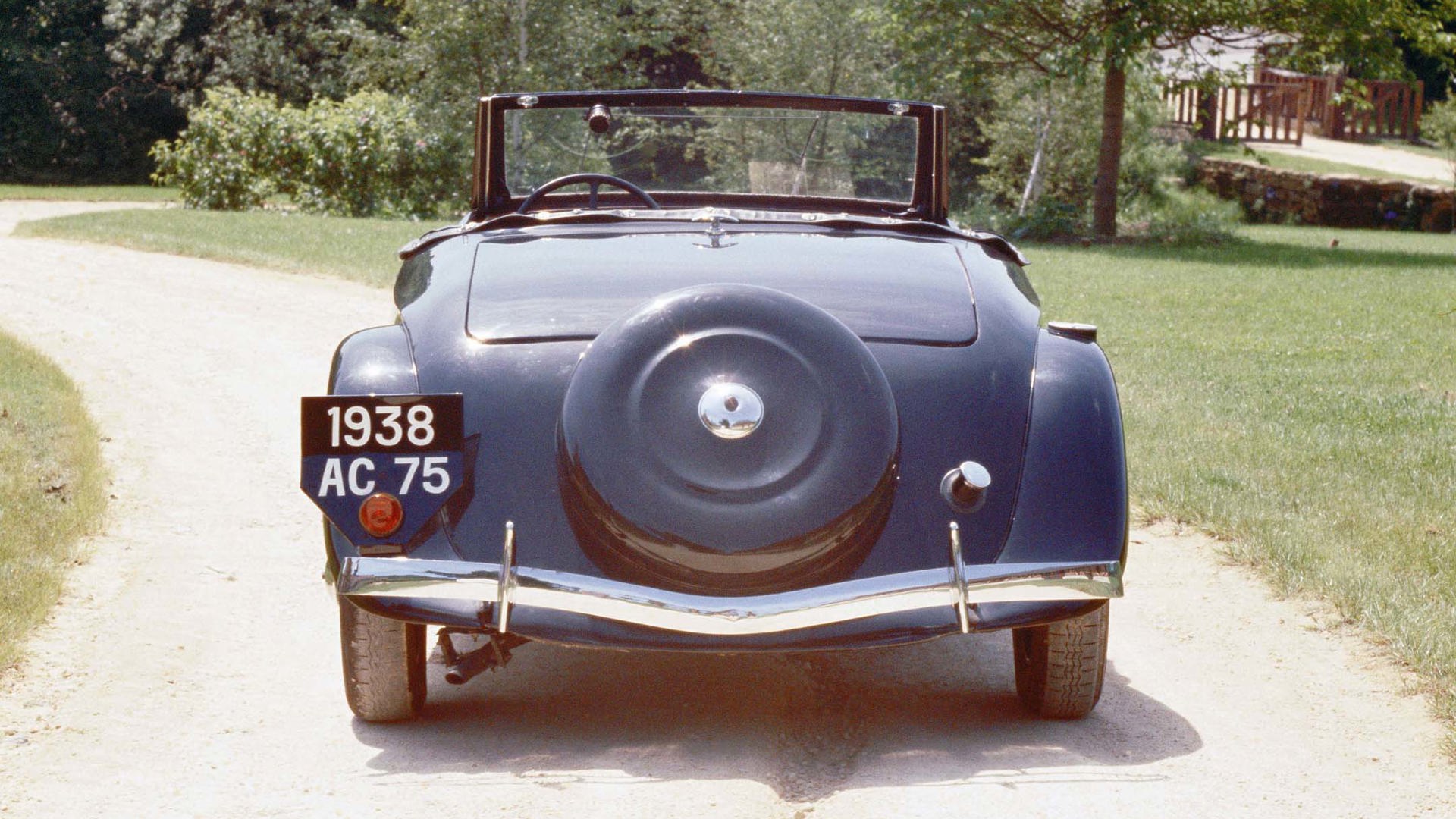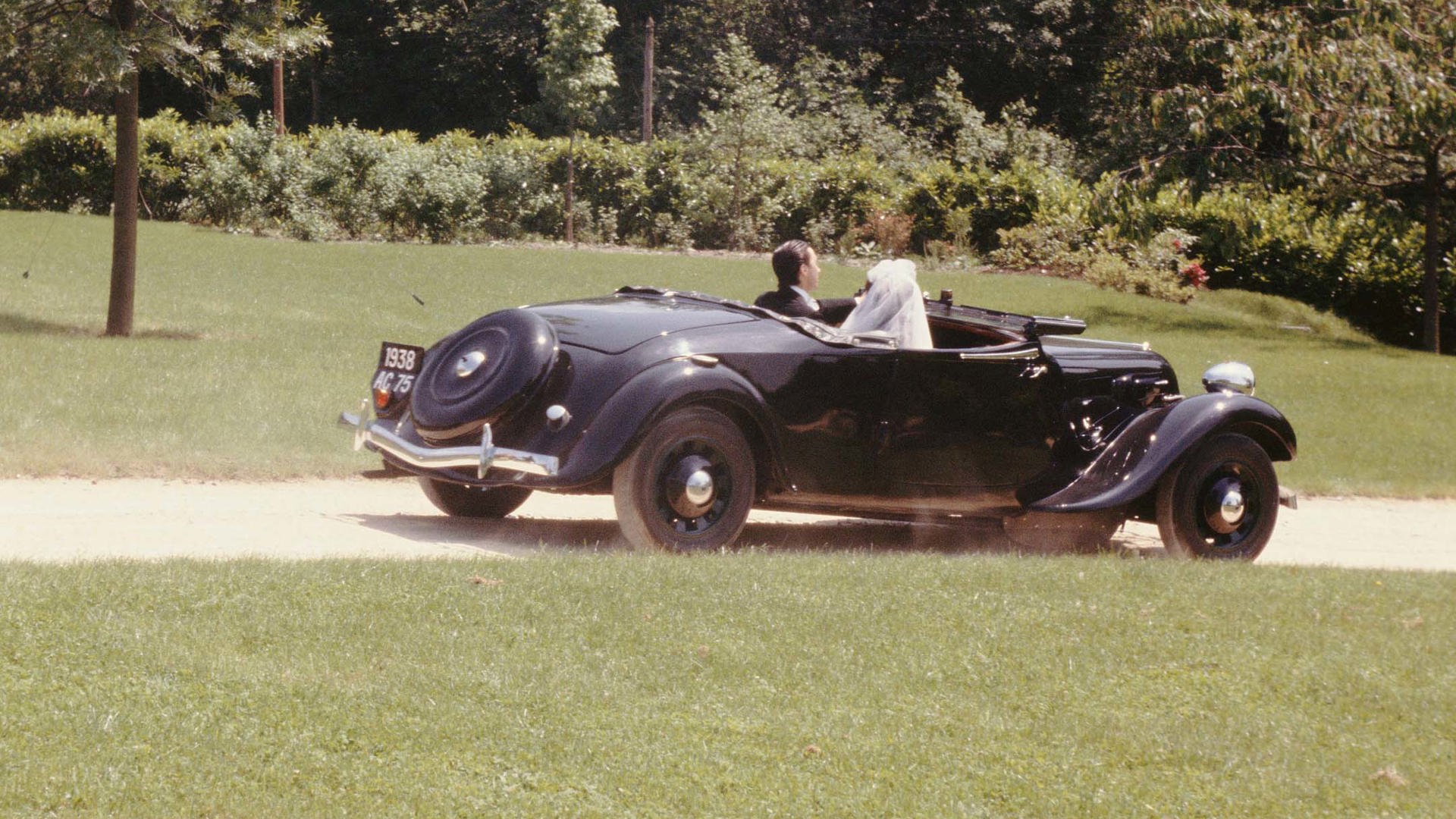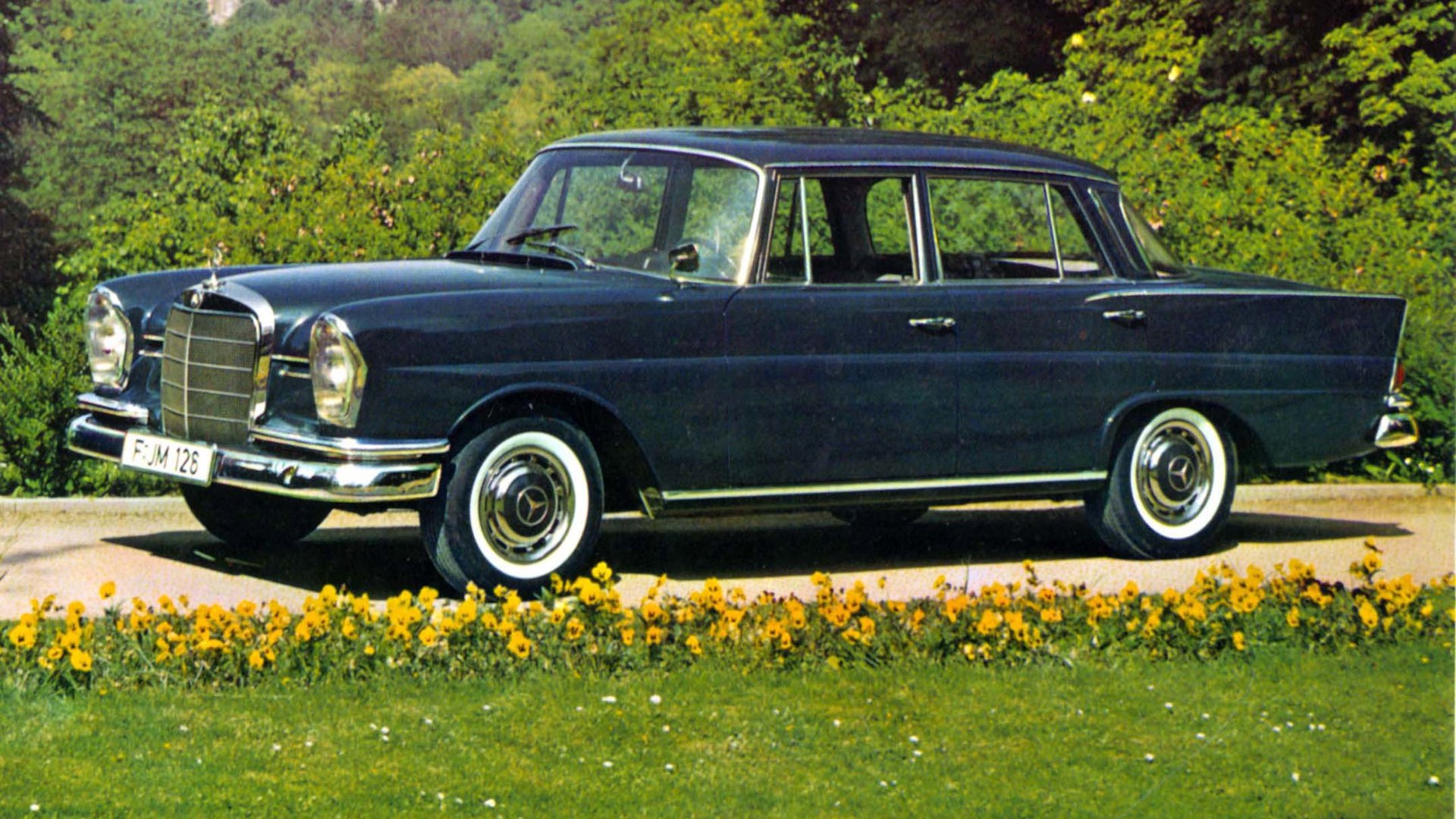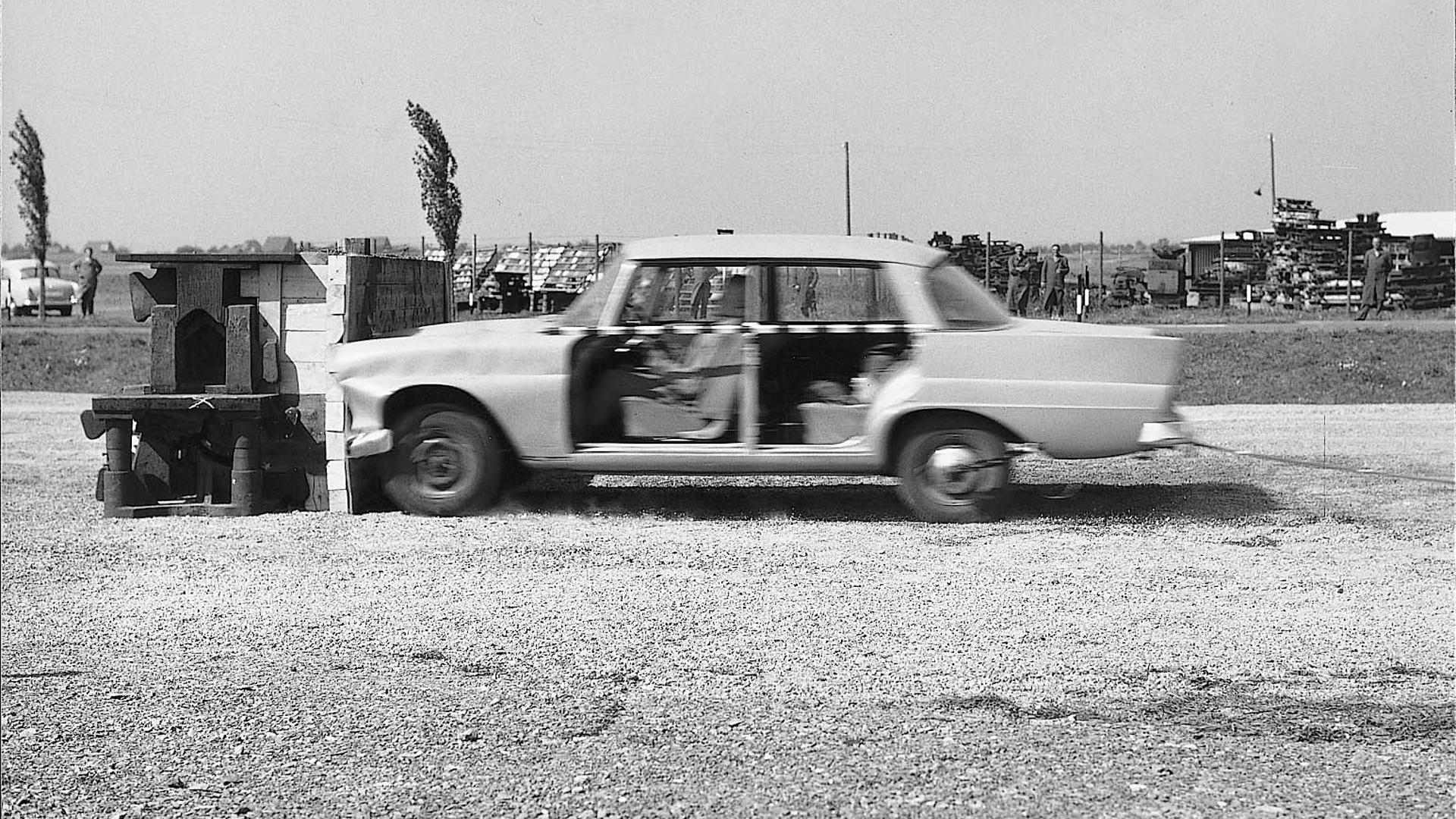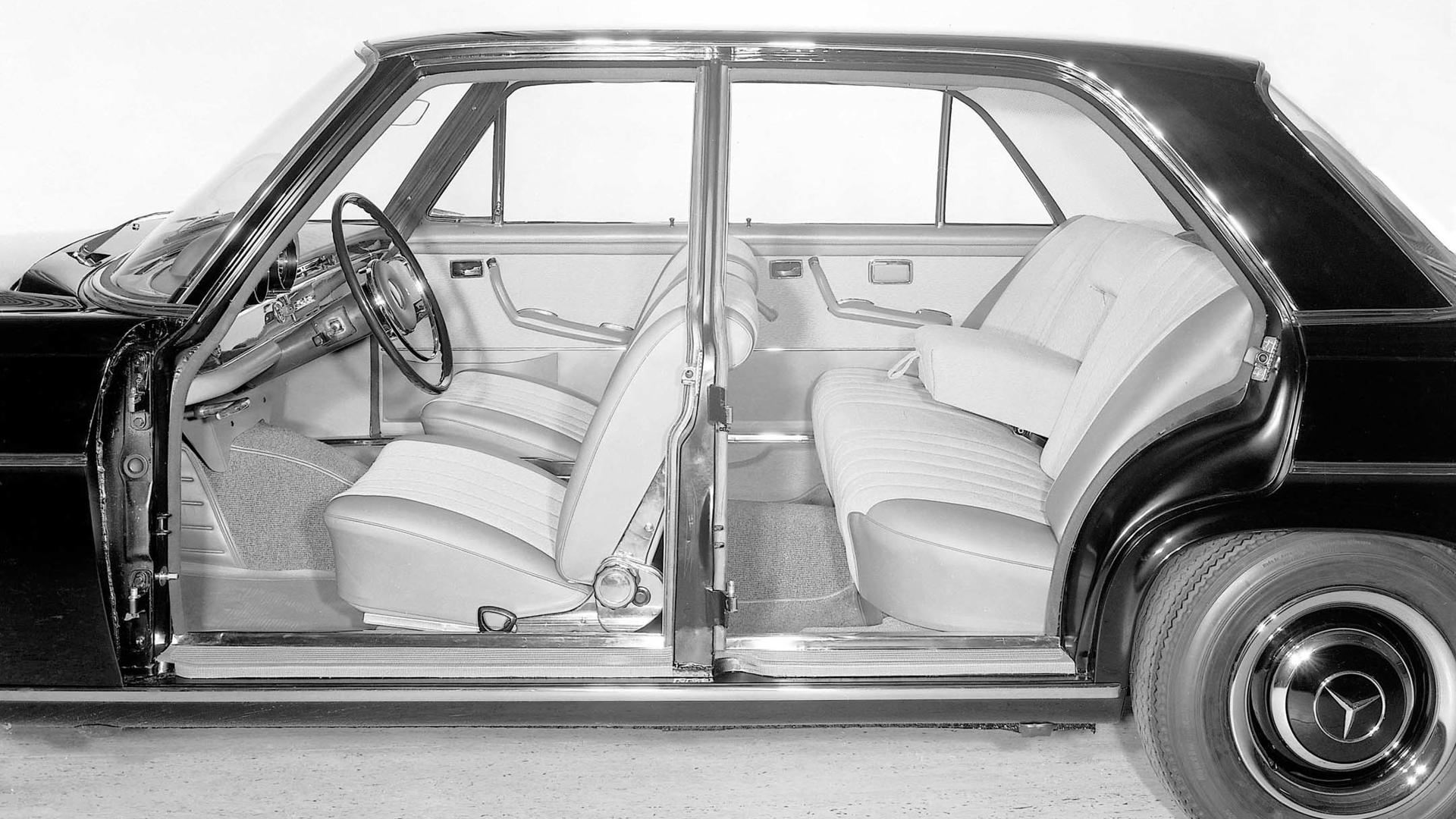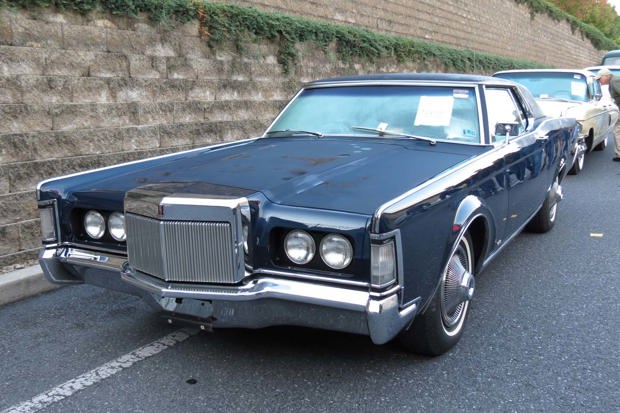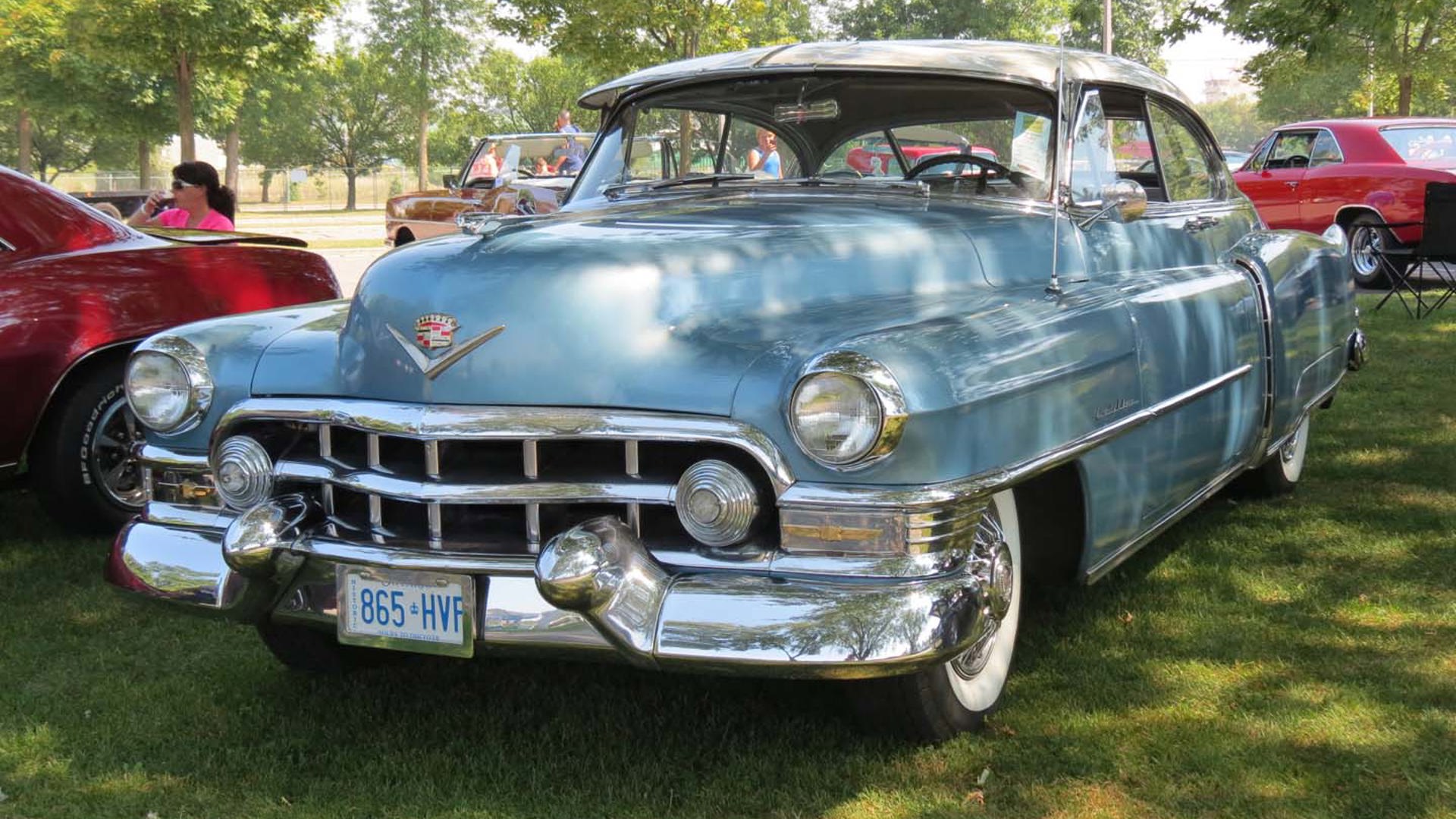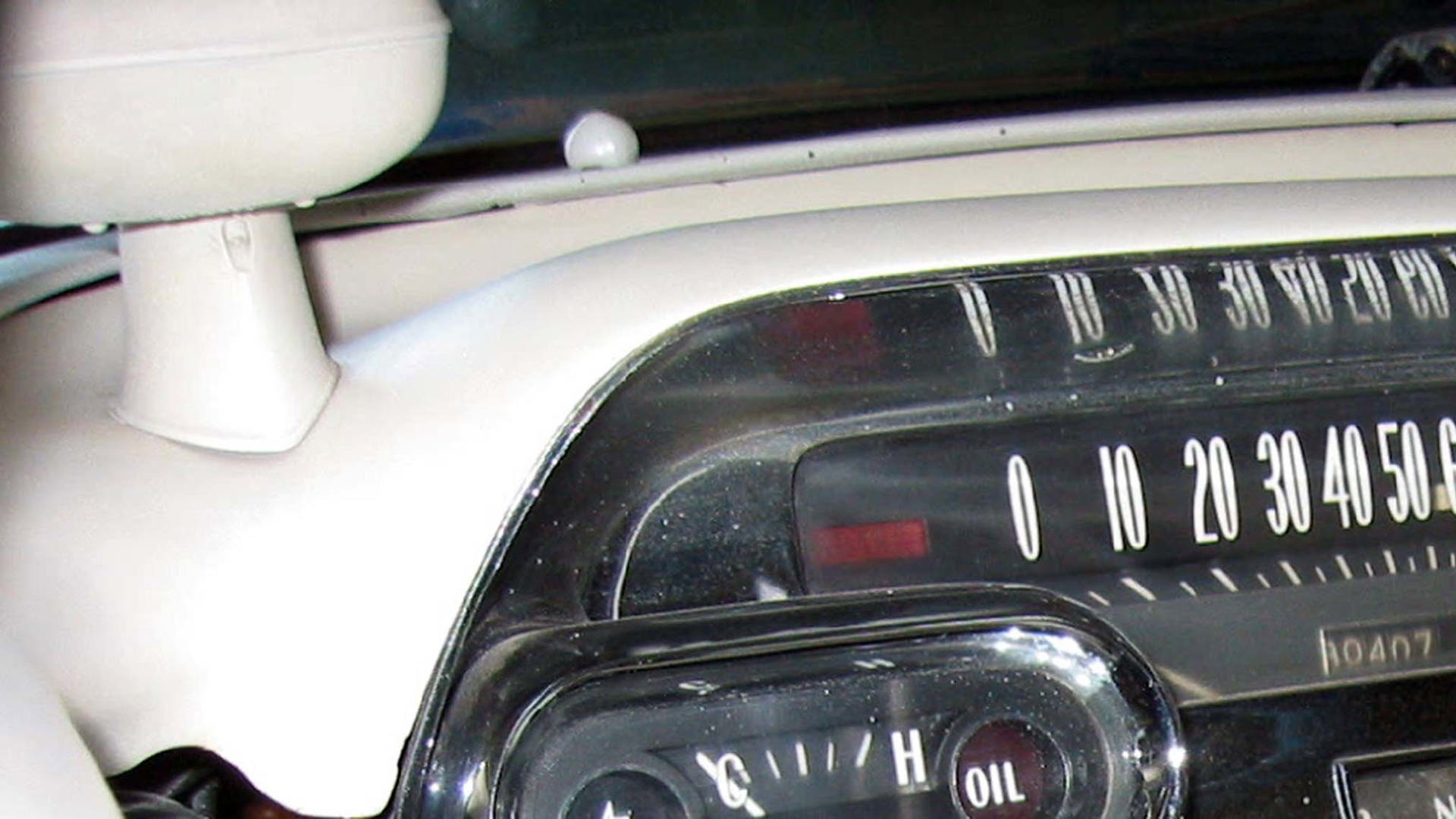New vehicles are packed with technology, from the anti-lock brakes and airbags found on all of them, to specialties such as automatic high-beam headlights or alternative powertrains.
Many are recent developments, but some are older than you’d expect – some have been around for over a century. Of course, they weren’t as sophisticated as they are now, but here are some “new” features that really are “old news”.
Electric Cars
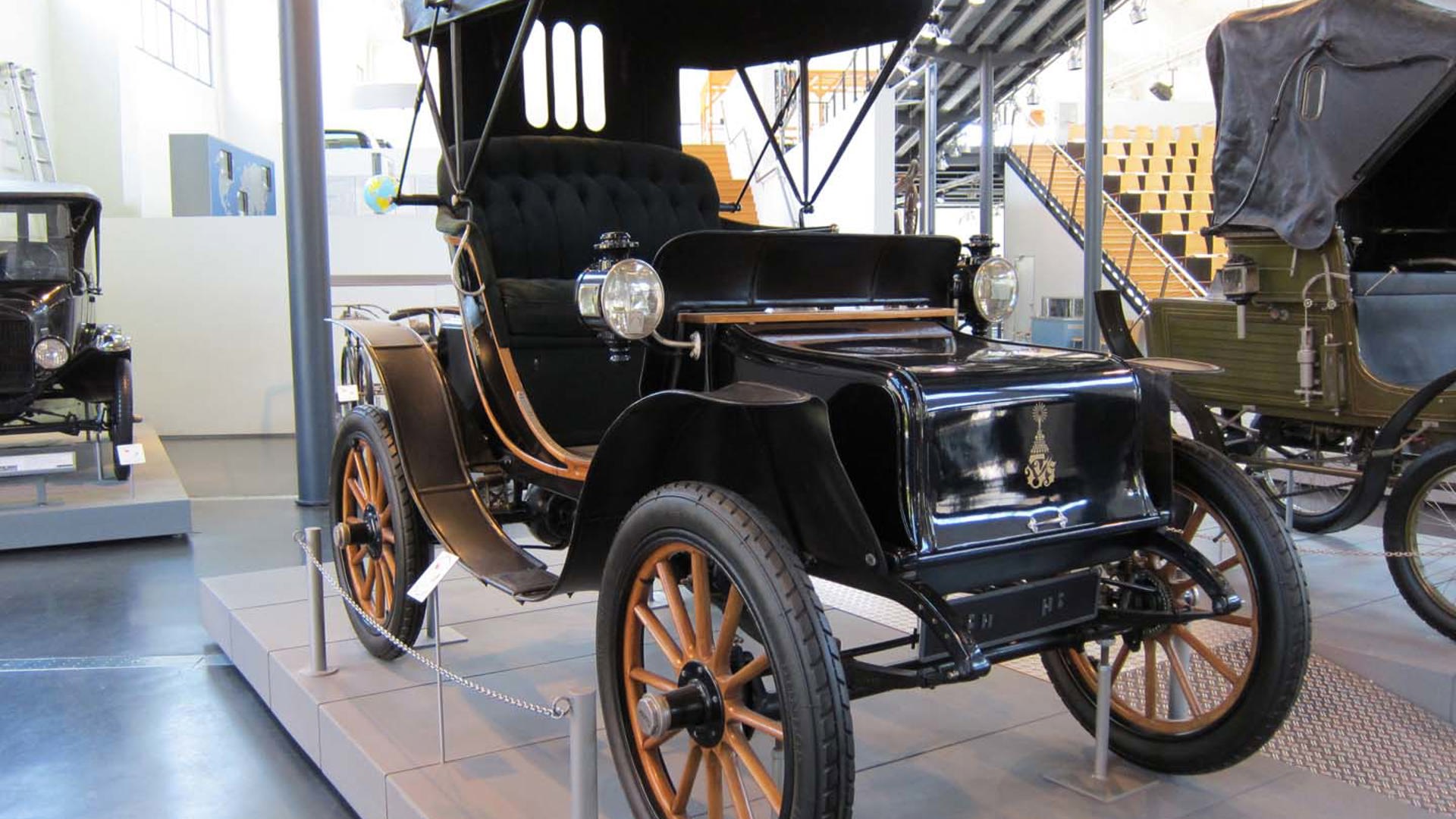
The first one might date from as early as 1832! That’s approximately when a Scotsman named Robert Anderson built an electric car powered by single-use battery cells – some twenty years before the lead-acid battery was even invented.
America got its first electric cars around 1887, and a few years later, Canada’s first battery car was built in Toronto. Soon after the turn of the 20th century, you could buy such cars as a Baker Electric, Waverley Electric, Detroit Electric, or Rauch & Lang.
Just as today, gasoline cars had longer range, but in those days you had to crank them to start, and that could be difficult or even dangerous. With a battery car, you just pushed a button. In 1912, Cadillac duplicated the electric car’s advantage by introducing the gasoline self-starter, and battery cars were soon on their way out.
Gas–Electric Hybrid Vehicles
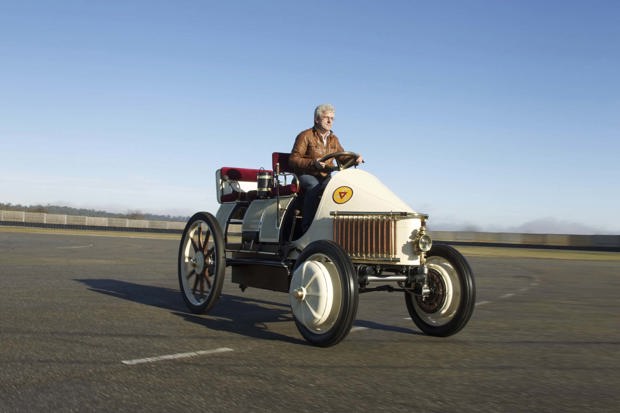
Bet you’re thinking 1999/2000, when you could first buy a Toyota Prius or Honda Insight in Canada. Not even close!
The earliest gas–electric hybrid was courtesy of Ferdinand Porsche, long before he started his own company. In 1898 he was hired by Lohner, a Viennese carriage company that wanted to build electric cars. Porsche designed an electric car with its motors in the wheels. He then created the Semper Vivus – Latin for “always alive” – in 1901.
It used Porsche’s electric wheel-hub motors, along with two gasoline engines that drove generators to make electricity. It could also run on its battery alone. The car was very pricey, and the company only sold eleven of them.
In 1914, the Galt Motor Company of Galt, Ontario, produced a car that used a gasoline engine to make electricity for the electric motor that drove the wheels. Only two were built, and only one exists today.
Fuel-Cell Vehicles
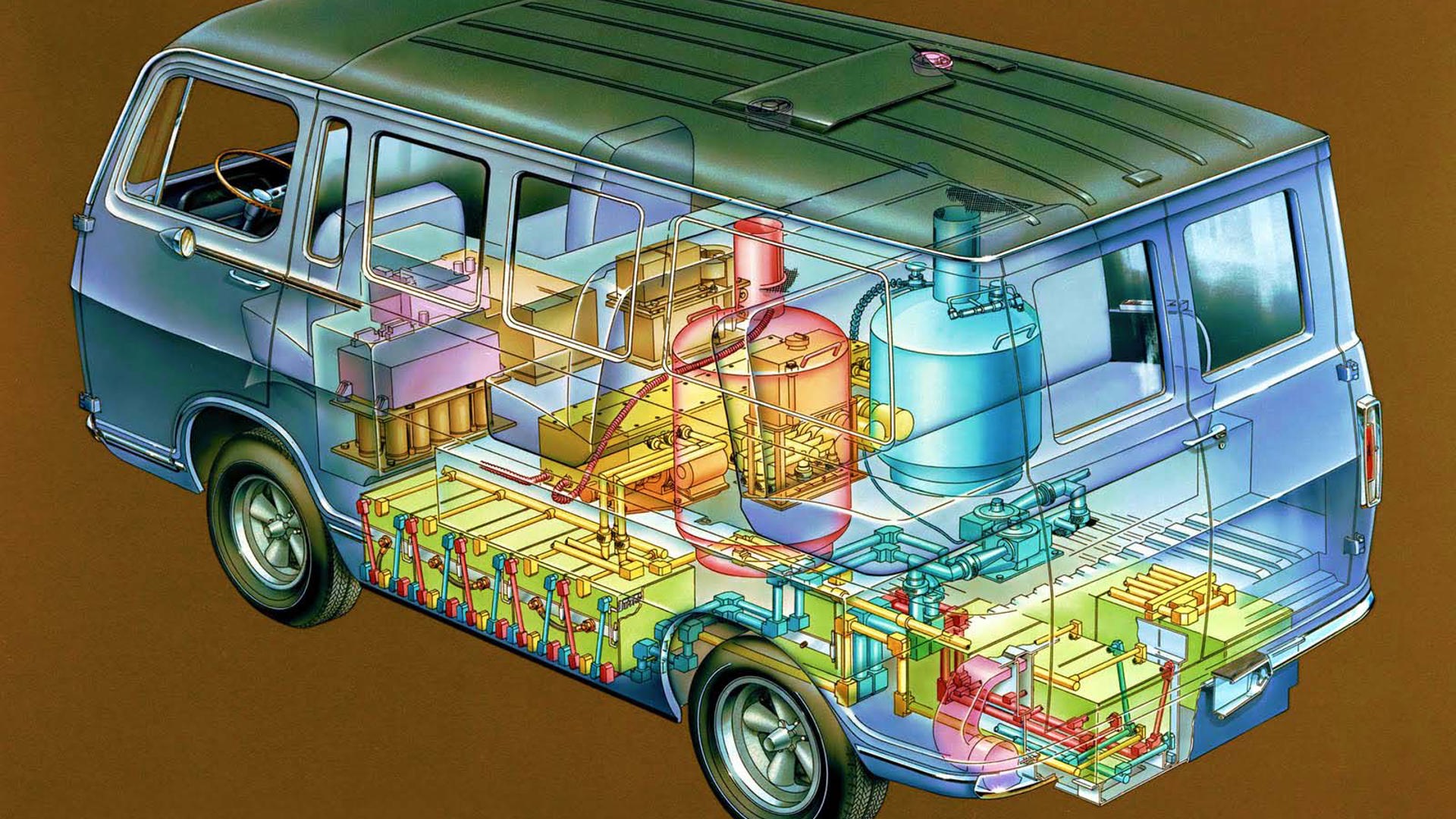
The Honda Clarity, Toyota Mirai, and Hyundai Tucson Fuel Cell make their own electricity from hydrogen and oxygen – but nope, not new!
Back in 1839, British inventor William Grove found a way to make electricity from that same combination, creating what he called a “gas battery”. In the 1950s, General Electric created a membrane for proton exchange – the modern fuel cell – and in the following decade, NASA used the cells in space.
The first hydrogen-powered fuel-cell vehicle was GM’s Electrovan of 1966. It used liquid oxygen instead of ambient air, and the system was so large it ate up almost all the interior space. It was only meant to be experimental and was far too expensive for production. After extensive testing, it went into storage and is still in GM’s collection.
Crash Testing
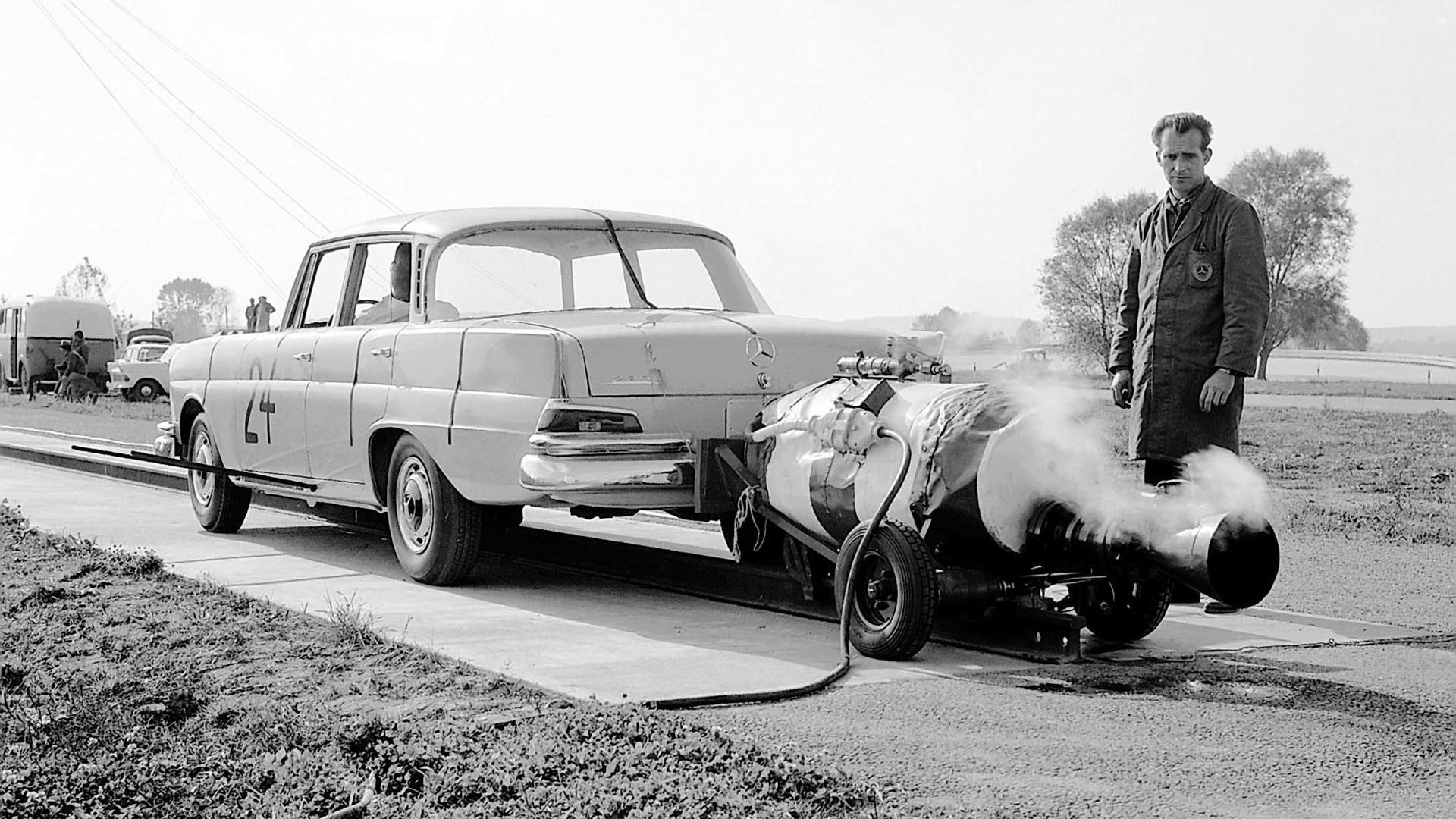
Automakers have been slamming cars into stuff for a while. General Motors was the first to use a barrier impact test back in 1934. Employees earned their pay: someone drove the car at the wall and jumped out at the last second. In 1974, Mercedes-Benz performed the first offset crash test, which has become the worldwide standard.
To figure out how occupants fared, early automakers crashed live pigs or chimpanzees, or human cadavers. Not surprisingly, there was uproar when the public found out.
The aerospace industry was testing on live volunteers, sometimes with horrific results. In 1949, a military supplier created “Sierra Sam”, a crude dummy with articulated joints. The first dummy for auto use, with flexible neck, steel rib cage, and internal space for data collection equipment, arrived in 1968. A decade later, GM developed the basic dummy design that’s used today.
Seatbelts
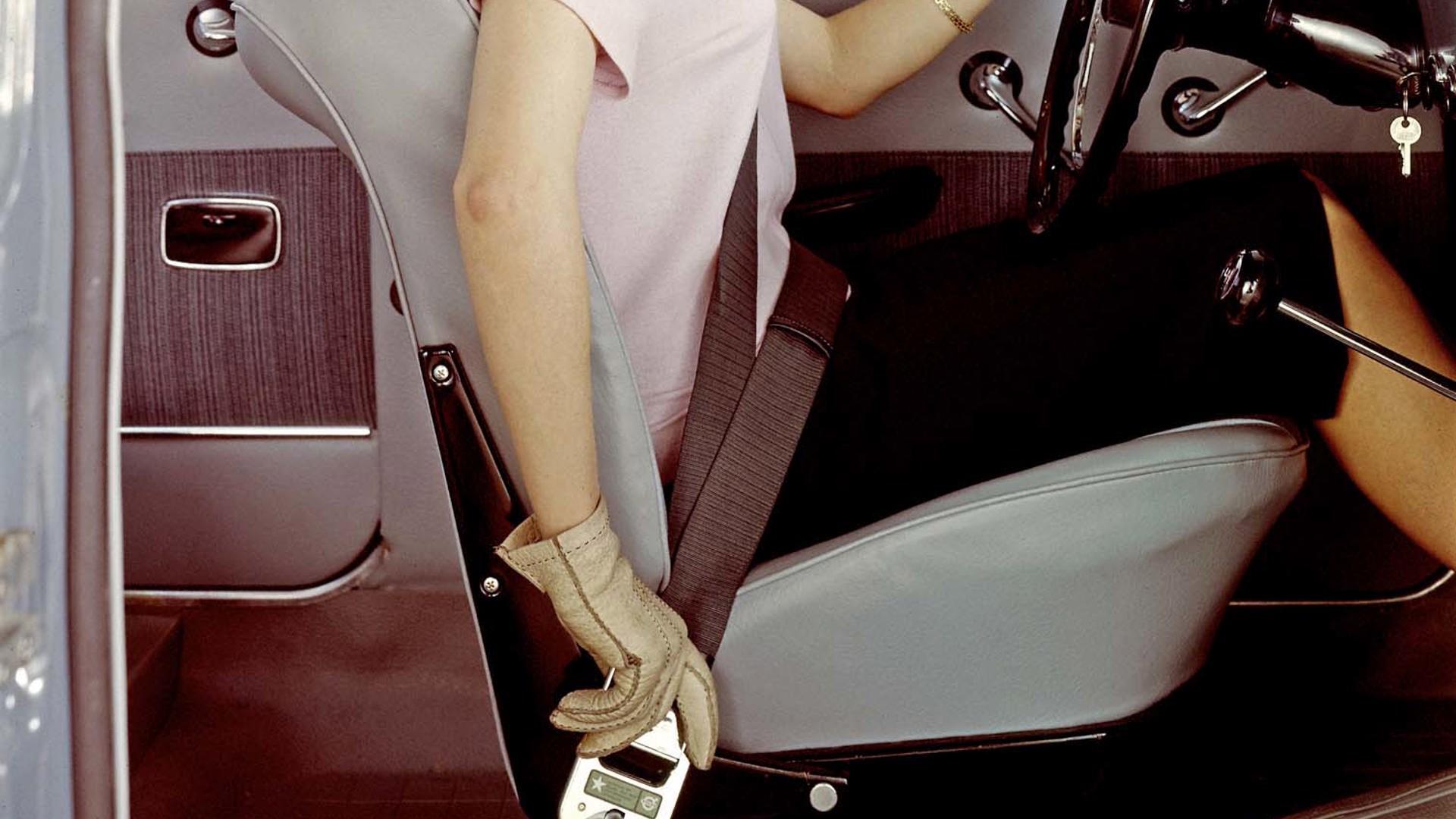
Back in 1895, Philip Schwarzmiller of Rochester, New York patented a “Child’s Guard for Vehicle Seats.” It was for horse-drawn carriages, but yes, it was a seatbelt.
Airplane pilots got them before drivers did, and in 1922, race driver Barney Oldfield asked a parachute manufacturer to make a seat harness for him. Shortly afterwards, the company added a new division, Irvin Automotive Products, to make aftermarket seatbelts for everyday cars. In 1989, it became part of Takata Corporation, which makes seatbelts in addition to its infamous airbags.
In 1950, Nash was the first American automaker to offer optional seatbelts, and in 1956, Ford and Chrysler offered lap belts on some models.
Volvo had a two-point diagonal belt by 1957, but the buckles could cause injuries. Safety engineer Nils Bohlin thought two belts were better – one over the hips, one across the chest – but they had to be easy to use. He combined them with a single buckle in the modern three-point seatbelt. Volvo patented it in 1958, but believing safety was paramount, took out an open patent. Any automaker could use the design.
Adding seatbelts was easy; getting people to use them wasn’t. Ontario passed Canada’s first mandatory belt law on January 1, 1976, and Quebec followed eight months later. The last was Yukon in 1991.
Airbags
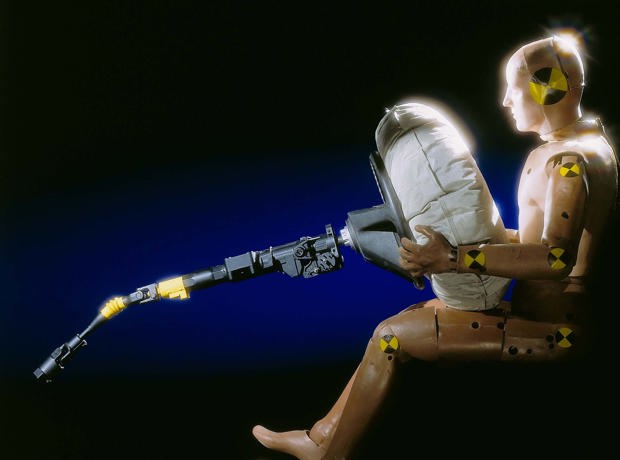
You could buy a car with one in 1973, and the design itself was already twenty years old.
Two inventors received patents for inflatable airbags in 1953: Walter Linderer of Germany, and John Hetrick of the US. Their ideas worked on paper, but they couldn’t get the bag to inflate fast enough after the bumper was hit. In 1968, American engineer Allen Breed developed a reliable crash sensor, and the airbag was born…
Stillborn is more like it. Ford put them in some fleet vehicles in 1971, while Oldsmobile first offered them to the public on the 1973 Toronado, but almost none were ordered. And the bags were far from perfect: they detonated with consistent force, and could injure or kill children or smaller adults.
Porsche’s 1987 944 Turbo was the first car sold in the US with standard driver and passenger front airbags. Honda was the first Japanese automaker to use them, and also introduced dual-output inflators that varied the deployment force depending on speed, occupant position, and seatbelt use.
The US government mandated front airbags in all new vehicles for 1999. It might surprise you to know they’ve never been required in Canada. Instead, automakers must meet a front seat passenger safety standard, and because airbags qualify and are in all the American-market cars anyway, that’s what we get.
Fuel Injection
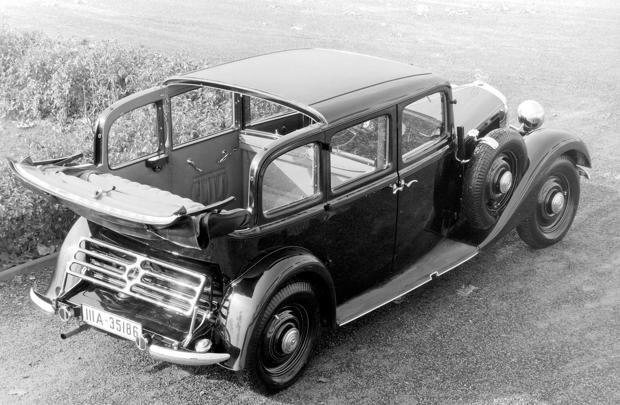
It’s used in virtually every car since the very early 1990s, but it dates back to the 1800s, and a gentleman named Rudolph Diesel. His engine originally ran on coal dust, forced into the combustion chamber with compressed air, but he later switched to oil.
Those early injection systems (and the engines themselves) were big and complicated, and improvements took a while. German engineer Prosper L’Orange came up with a better injection nozzle in the early 1900s, and in the 1920s, Robert Bosch developed the fuel injection pump. With smaller engines now available, the 1936 Mercedes-Benz 260D became the first production car with a diesel engine. Bosch introduced gasoline fuel injection on a two-stroke engine in 1951, on a small German car called the Gutbrod. Mercedes-Benz was the first to put a four-stroke, fuel-injected gas engine in a series-production car with its 1954 300 SL gull-wing coupe.
In the US, one of the first companies manufacturing systems for hot rods and race cars was Hilborn Injection, which is still around today. Founder Stuart Hilborn developed his craft in California, but he was born in Calgary.
Front-Wheel Drive
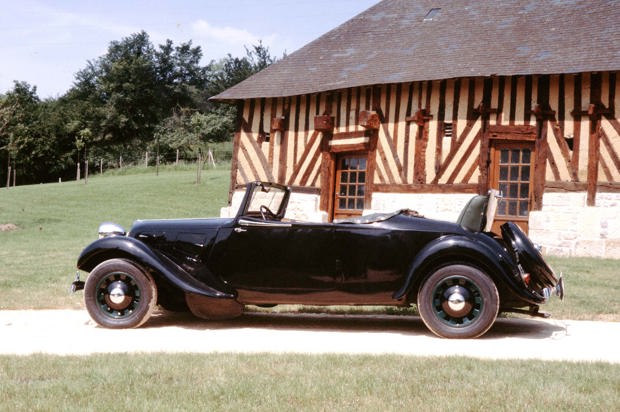
Rear-wheel drive dates back to the earliest motorized vehicles, which used chains between the engine and the wheels. It was easier to power the rear wheels, because the front ones had to be able to turn.
A few early automakers experimented with front-wheel drive, but it was John Christie, an American engineer, who made it work. He built six race cars with it, one of which topped 145 km/h in 1906.
One of Christie’s mechanics was Harry Miller, a carburetor expert who expanded into building race cars and engines. He was asked to build a front-driver in 1921, and when it ran second in the Indy 500, Miller was the car every driver wanted.
Miller also worked with Indiana automaker Cord, and its 1929 Cord L-29 is considered the first FWD production car. But only about 8,000 of Cord’s two models were built, and so the title for the first mass-produced one goes to the popular 1934 Citroën 7CV Traction Avant.
Crumple Zones
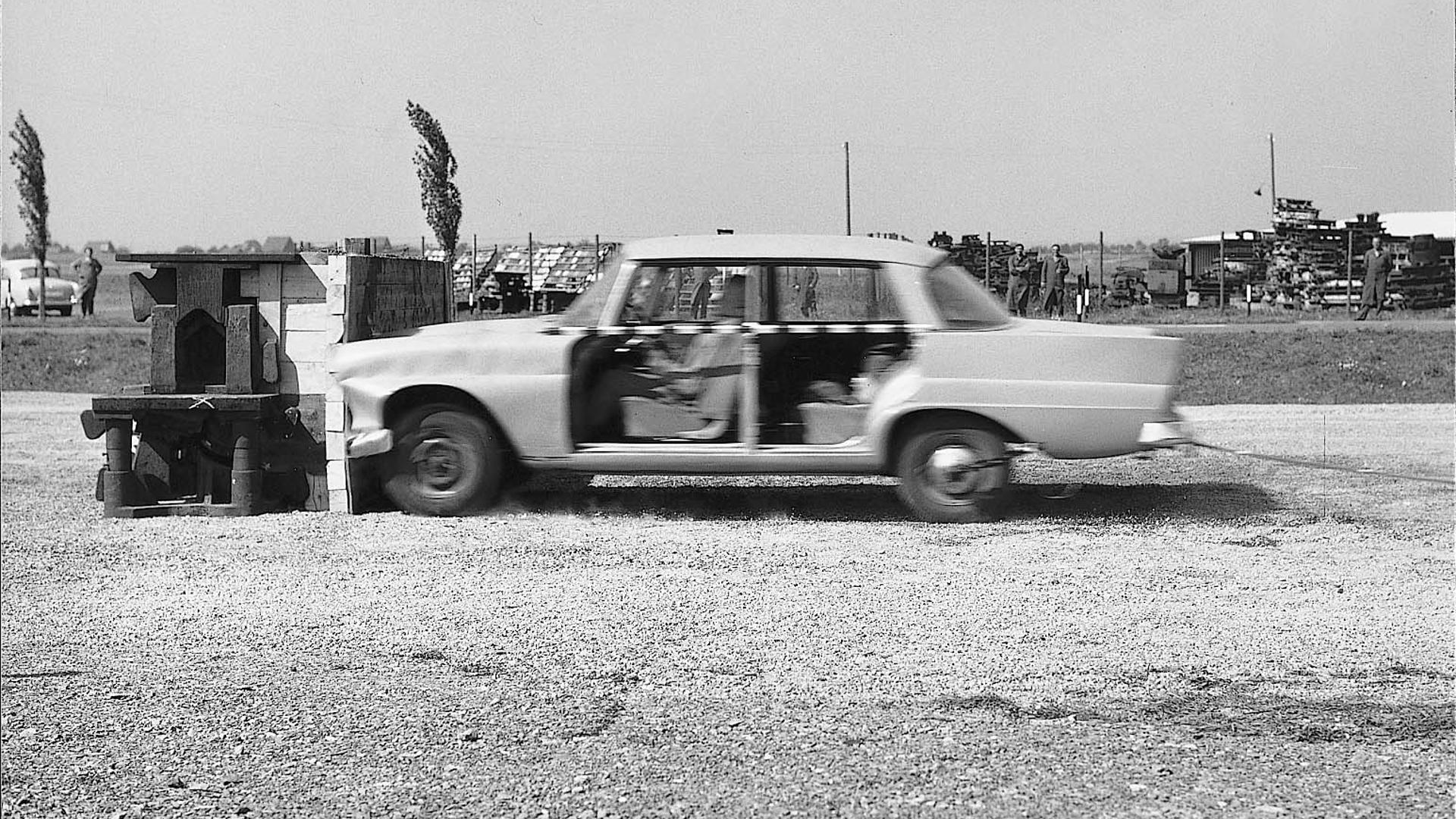
Modern cars fold up like accordions in a crash, and that’s the point. They have “crumple zones” that dissipate crash energy, so it doesn’t transfer to the passengers with deadly force.
New? Not even close. For this, we go back to the Fabulous Fifties with Mercedes-Benz.
One of its designers, Béla Barényi, realized the inherent danger in the stiff bodies his colleagues created. He came up with a rigid passenger compartment and “cells” that were flexibly joined at the front and rear, which deformed progressively as the car was hit. His design was patented in 1951, and the first car to use it was the 1959 Mercedes-Benz 220b.
The new Benz also featured a steering wheel hub that wouldn’t impale the driver in a crash (although the collapsible steering column had to wait until 1967), padded dash, and the first door lock safety catch, which helped keep it closed in a collision.
Anti-Lock Brakes
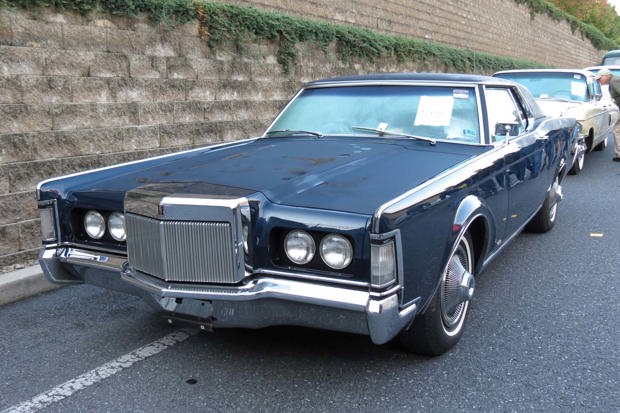
Anti-lock brake systems originally came down from the skies. It was invented in 1929 by Gabriel Voisin, a French auto and aeronautical engineer, to avoid pilots having to gradually threshold-brake after landing.
Voisin’s system, which let them hit the brakes right away, used a flywheel to open and close a hydraulic fluid valve. Unfortunately, it was too big and complex for a car.
ABS was also developed for trains, but both trains and planes braked in straight lines, ran on smooth surfaces, and usually stopped just once per trip – none of which applied to cars. But a new airplane system in 1952 was modified for cars, and first appeared on Britain’s 1966 Jensen FF.
Lincoln offered a rudimentary anti-skid braking system in 1969, and Chrysler and Cadillac followed in 1971. The electronic, four-wheel, multi-channel design used today was developed by Bosch and Mercedes-Benz, and first offered on the S-Class in 1978. Electronic stability control, which builds on ABS, first appeared in 1995.
Automatic High-Beam Headlamps
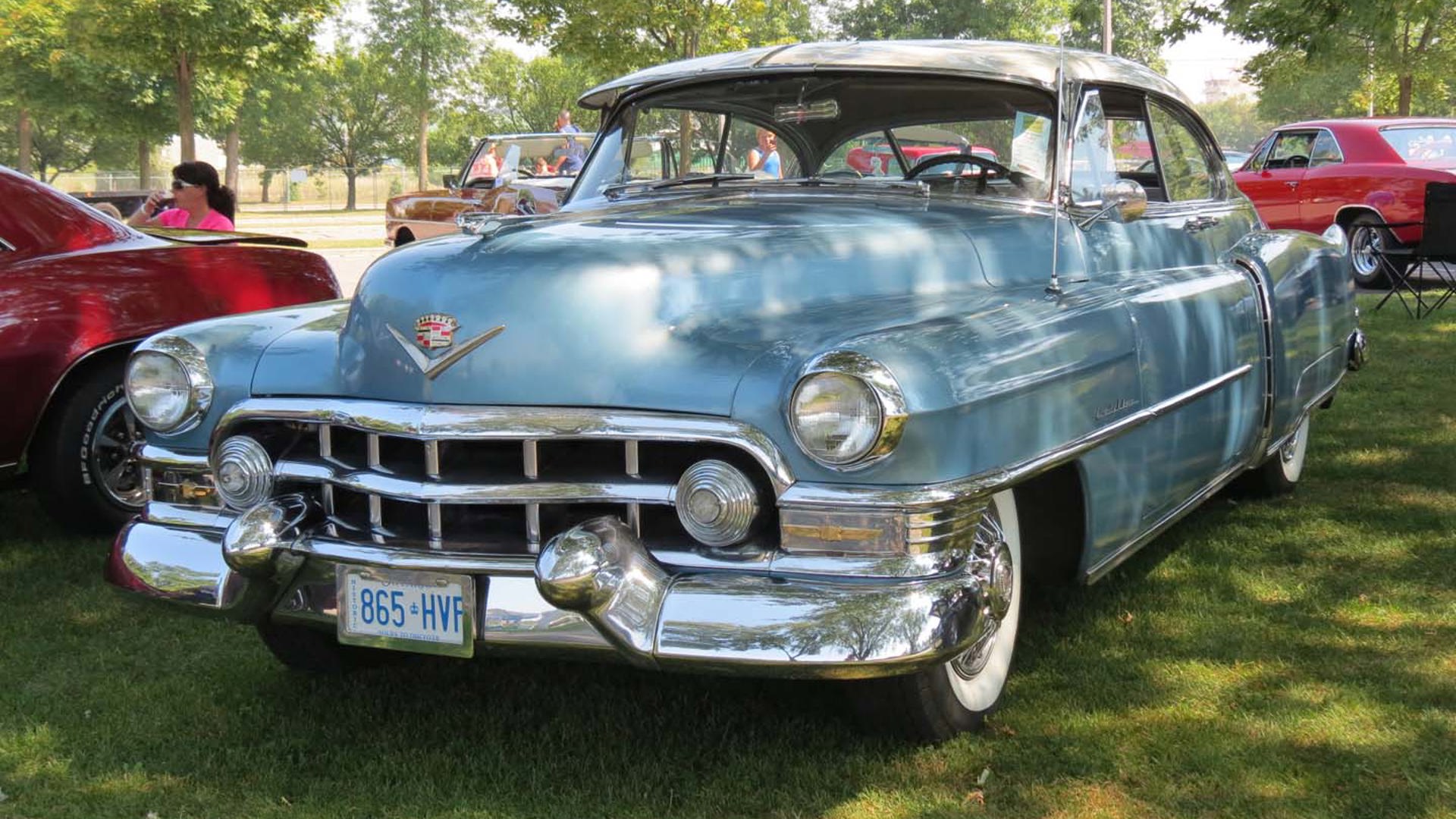
They’re a hot new feature on several vehicles today: the high-beam headlights automatically dim when traffic approaches, and when it passes, the bright lights come up again.
All-new? You should know better by now. Cadillac introduced a version in 1952, called the Autronic Eye. The visible part was a sensor pod mounted by the windshield, while a big box inside the dash held the electronics.
At $53, it was the equivalent of a $1,000 option on an Escalade today. It was also available on Oldsmobile in 1953, and on Buick for 1958. And today, it’s one more item you might think is new… but now you know.
